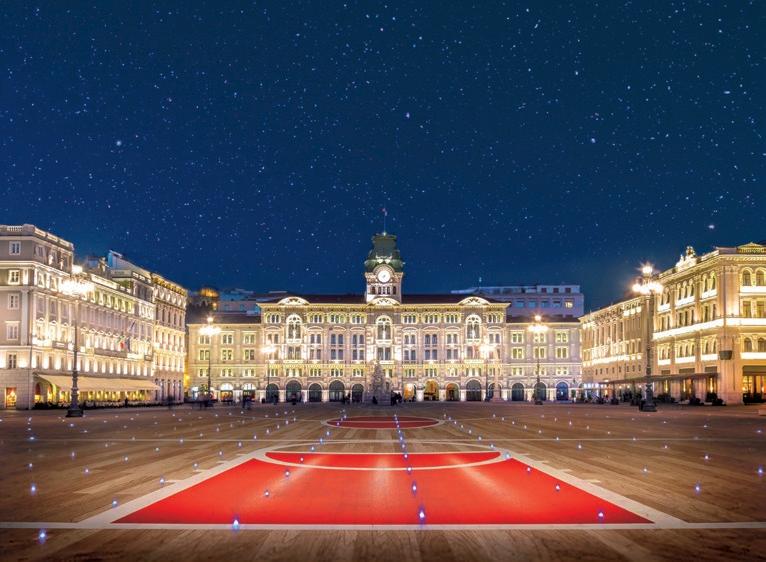Basketland

Trieste and the USA
Player Idol Playground

Basketland

Trieste and the USA
Player Idol Playground







Nei primi mesi di quest’anno, alla vigilia dell’ingresso della proprietà americana nella Pallacanestro Trieste, ci siamo ritrovati intorno ad un tavolo a parlare del rapporto di Trieste con il basket –e con lo sport in generale– e di quante eccellenze fosse stata in grado di esprimere una città con una provincia così piccola. Durante la conversazione, esempi e storie hanno affollato il tavolo senza sosta, lasciandoci sempre più stupiti di quanto fosse speciale la nostra città e quanto fosse importante ricordarlo sia a coloro che, come noi, vivono immersi nella quotidianità di Trieste, sia a chi ancora non ha avuto la fortuna di conoscerla. Trieste è davvero un luogo eccezionale sotto molti punti di vista, e noi abbiamo scelto di concentrarci sul suo lato sportivo. Il basket rappresenta l’orgoglio di una cultura sportiva senza rivali, scorre nel sangue dei triestini, unendo la gente in una comunità coesa e grintosa. Trieste Basket, che sostiene questo progetto narrativo in collaborazione con IES, è nata come simbolo dell’identità locale e come collante tra la prima squadra cittadina, la Pallacanestro Trieste, ed il tessuto imprenditoriale locale. Con questo numero speciale di IES, abbiamo voluto condividere la nostra passione con la città ed oltre i confini locali, per raccontare come in un territorio così piccolo possano esistere così tante storie straordinarie.
Lorenzo Pacorini Presidente Trieste BasketEarly this year, as the acquisition of Pallacanestro Trieste by American investment group CSG was being finalised, we set together to discuss the bond between the city of Trieste and basketball – and sports in general – focusing on the sheer number of top athletes originating from such a geographically limited area. Countless examples and stories, like overflowing rivers, poured into our conversation, as we realised how incredibly unique Trieste is, and how her uniqueness deserves to be celebrated, both among those who, like us, are lucky enough to live here – and may need to be reminded thereof – and among those who have yet to experience our city.
Of all the numerous reasons why Trieste is truly exceptional, we chose to focus here on sport-related aspects.
Basketball is the flagship of the city’s unparalleled sport vocation, it runs in the veins of her citizens and brings them together in a proud, closelyknit, and gutsy community.
Trieste Basket, partnering with IES in this story-telling project, was born as a symbol of local identity, to act as the glue keeping together Trieste’s first basketball team Pallacanestro Trieste and the city’s business fabric.
This special edition of IES is our way of sharing our passion with locals and visitors alike, by presenting an extraordinary collection of amazing stories, all originating from this little big territory.
Trieste Basket nasce dall’impegno di un gruppo di imprenditori appassionati, che credono nei valori di questo sport e nelle potenzialità del territorio. Imprese, liberi professionisti, attività commerciali e realtà consortili si uniscono per essere il secondo socio del club, con un consigliere all’interno del CdA. Spirito sportivo, etica, rispetto, impegno ed organizzazione: sono questi i punti di riferimento di un gruppo che vuole fare squadra al servizio della Pallacanestro Trieste e che negli anni è cresciuto sino a raggiungere gli oltre 40 marchi che oggi sono rappresentati.
Chiari gli obiettivi che Trieste Basket si prefigge ed insegue: sostenere questo sport in città con azioni concrete; rilanciare il tessuto produttivo del territorio grazie a nuove collaborazioni e far crescere l’entusiasmo della comunità attorno alla squadra con attività coinvolgenti.
Previste convenzioni sia in campo che fuori, con appuntamenti riservati, scontistica sulle sponsorizzazioni alla squadra, partite e incontri conviviali, oltre ad offerte esclusive per il B-to-B con altre realtà legate al basket.
Entra allora in Trieste Basket. Gioca a tutto campo, metti insieme passione e ragione!
Trieste Basket owes its existence to the determination of a group of entrepreneurs, who firmly believe in this sport and the potential of this territory. Businesses, freelancers, firms, and consortium companies came together to become the club’s second shareholder, with one member in the Board.
Sportsmanship, ethics, respect, commitment, and organisation: these are the guiding principles leading this group that decided to come together as a team to support Pallacanestro Trieste, and today counts over 40 brand names within its representation.
Trieste Basket is actively pursuing a set of clear goals: providing material support for this sport in the city; giving new momentum to the local production industry by enhancing its underlying cooperation network; and promoting the local community’s involvement in the club’s activities through dedicated events.
Future actions include new agreements – both in- and outside the court, with premium-only events, sponsorship discounts, exhibition games, and gettogethers, as well as basketball B2B-exclusive offers.
Join Trieste Basket. Merge passion and reason, and become your own game maker!
90%
10% Trieste Basket
Board of Directors
CSGI Cotogna Sports Group Italia Gianni De Palo Consigliere /director Andrea Monticolo Consigliere /director Daniele Muha Consigliere /director Lorenzo Pacorini Presidente /President Antonio Rosanò Consigliere /director Silvio Stafuzza Consigliere /director Franco Stock Consigliere /director Consiglio direttivo Trieste BasketLaforza di un gruppo per la Pallacanestro Trieste
Pallacanestro Trieste and the power of teamwork

È Trieste che si è innamorata della pallacanestro o è stato questo gioco a strizzare l’occhio alla città? Forse è un quesito di poca importanza. Sta di fatto che tra un pallone da basket e la nostra gente molto tempo fa è scoccata una scintilla, diventata poi attrazione, passione, infine amore. Come chiamarlo, altrimenti?
E allora, questo numero speciale che IES dedica al basket, altro non può essere che “un atto d’amore”. Perché a Trieste, nonostante il calcio con le sue leggende in maglia alabardata, nonostante la calamita di un mare che attrae migliaia di cittadini-naviganti, nonostante la viscerale passione per tutto quanto è corsa, movimento, sudore, aria aperta e vento tra i capelli, che negli anni l’hanno fatta diventare la “città più sportiva d’Italia”, nonostante tutto ciò, in fondo al cuore di molti, l’arancia ed il canestro conservano un posto speciale.
Ecco il perché di queste pagine, ricche di immagini, storie, racconti ed aneddoti, che testimoniano il profondo legame di quel gioco nato per caso in una palestra del nord America e diventato uno degli sport più praticati del mondo. Ce lo raccontano, tutti assieme, i campioni di ieri e di oggi, sfogliando l’album dei ricordi e guardando al futuro, attraverso le testimonianze raccolte da amici e colleghi, che al basket hanno donato gran parte della loro vita.
Che il viaggio abbia inizio! Tra alti e bassi, trionfi e sconfitte, gioie e delusioni, pianti ed abbracci. Sullo sfondo, l’innegabile feeling con la patria di questo sport, quegli Stati Uniti d’America che hanno segnato la storia di questa città, lasciando un’impronta calpestata poi da migliaia di “basket-ball shoes”. Dal primo parquet della città, realizzato dagli americani all’Idroscalo, ai play-ground di casa nostra (qui si chiamano Ricreatori Comunali), che sfornano ancor oggi i campioni di domani; dalla costola triestina che ha fatto nascere la grande Milano cestistica di ieri e di oggi, fino alla squadra triestina attuale che –incredibilmente– è di nuovo legata al Paese che questo sport lo ha inventato.
Il nostro magazine di accoglienza turistica, una volta di più è pronto a vestire i panni del cicerone, per farvi stavolta da guida tra i segreti e le bellezze di Trieste e del suo amore per il basket.
di /by Giovanni MarziniWhether it was Trieste that first fell in love with basketball, or basketball that started flirting with the city, is of little importance. What really matters is that their initial spark soon turned into attraction, then passion, and, finally, love. There is no better word to describe it. This is why this special issue of IES is an “act of love” and a dedication to basketball. True: Trieste is fond of her legends wearing the city’s halberd on the football field; her sea and seafarers; her outdoors, especially the city’s jogging itineraries, and the feeling of the wind running its fingers through one’s hair, each step echoing one’s heartbeat. Indeed, the sheer number of local joggers and running enthusiasts has earned Trieste the title of “Italy’s city of sports”. And yet, despite all the above, many a heart in Trieste beat only for the rock and the hoops.
A special issue of images, tales, history, and anecdotes, illustrating the bond between Trieste and basketball – an indoor game invented by a Massachussettes PE professor to keep his gym class active on a rainy day, that soon evolved into one of the world’s most popular sports. Guided by the voices of past and present basketball champions, IES readers can revisit the glories of the past and cast a glance into the future, thanks to the invaluable contribution of friends and colleagues, who have devoted a significant part of their lives to basketball.
Let the journey begin! With its highs and lows, triumphs and defeats, celebrations and disappointments, laughs and tears, against the backdrop of basketball’s home, the United States of America, and the impression they left on Trieste – in this case, a footprint outlining the herringbone pattern of a basketball shoe.
From the first hardwood-floored court built by the Americans at the Idroscalo (lit. seaplane base) to the city’s “playgrounds”, which here are called Ricreatori Comunali (lit. municipal recreation centres), still churning out some of Italy’s most promising rookies; from the golden age of Trieste’s basketball, feeding the A-League teams of Milan, to today’s home team and its renewed American connection.
Once again, our magazine welcomes Trieste’s visitors, ready to guide them through the city’s secret treasures and love for basketball.
direttore responsabile
Giovanni Marzini
coordinamento
Rino Lombardi
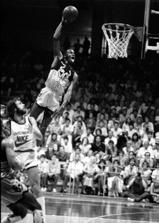
segreteria di redazione
Fabiana Parenzan redazione@prandicom.it
Via Cesare Battisti 1, 34125 Trieste
hanno collaborato
Severino Baf, Raffaele Baldini, Federico Bolle, Paolo Condò, Roberto Degrassi, Rino Lombardi, Carolina Meucci, Guido Roberti, Marco Stabile, Franco Stibiel, Sergio Tavčar
traduzioni
Rita Pecorari Novak, Eugenia Dal Fovo progetto grafico e impaginazione
Matteo Bartoli, Elisa Dudine – Basiq
stampa
Riccigraf S.a.s.

foto di copertina
Linda Cravagna
fotografie
Giovanni Aiello, Demis Albertacci, Camilla Bach, Carlo Borlenghi, Linda Cravagna, Simone Ferraro, Stefano Gattini, Paolo Giovannini, Andrea Pisapia, Fabio Ramani, Archivio Pallacanestro Trieste, Archivio Adobe Stock




I“In Italia le città del basket sono quattro: Milano, Varese, Bologna e Trieste!” È la risposta del nuovo general manager della Pallacanestro Trieste alla domanda che IES gli ha fatto sul perché abbia accettato l’offerta del gruppo Cotogna. Può bastare, perché nello stile asciutto di questo sessantenne avvocato di New York aver inserito la nostra città nel ristretto rango delle basket-city italiane giustifica la sua scelta.
“Non ho mai pensato a Trieste come ad una piazza da serie A/2. Ok, adesso siamo qui, ma la mia valutazione è diversa. Per la sua storia, le sue tradizioni e la passione che gli abitanti di questa città da sempre hanno riservato alla pallacanestro, Trieste merita il palcoscenico più importante. E lo conquisteremo assieme”!
di /by Giovanni MarziniUn passato da buon giocatore, ad un passo dal vestire la maglia di un team bolognese sul finire degli anni 80 come oriundo e poi una carriera fuori dal campo tra coach nel college, scout e dirigente con diverse franchigie NBA (i Knicks di New York restano la sua squadra del cuore) sino all’esperienza italiana nella ricostruzione di Varese al fianco del presidente-giocatore Luis Scola. Una stagione soltanto, sufficiente per farlo nominare dalla LBA come “manager dell’anno”.
“L’arrivo nella vostra città è però anche dovuto a Richard de Meo e agli altri componenti di Cotogna Group, che conoscevo da tempo. Nutro grande stima per queste persone: quelli che escono dalla Wharton School of the University of Pennsylvania, sono manager di tutto rispetto. E quando mi hanno illustrato il loro progetto per Trieste, non ho avuto alcun dubbio nell’accettare l’offerta. Mi stimola poter costruire qualcosa che possa durare nel tempo. Per Trieste non vogliamo solo la risalita nel basket di vertice, ma disegnare veramente una società che possa ambire nell’arco di qualche anno ad avere un suo spazio a livello europeo. Ne serviranno 5, 6 o 7? Può darsi, ma intanto iniziamo a lavorare bene da subito”.
Avete iniziato ripartendo da uno stretto legame con la realtà del territorio. Tre triestini doc nel roster non sono poca cosa nel basket di oggi…
“A Bossi, Deangeli e Ruzzier aggiungici pure Daniele Cavaliero, che lavorerà al mio fianco. Credo molto nelle persone cresciute anche sportivamente nella città della quale indossano la maglia. Posso immaginare le domande, anche i dubbi della gente, sulla proprietà americana della società. Io però ragiono così: i veri proprietari sono i triestini. Sono i nostri tifosi, sono i nostri abbonati, sono quei settemila che spero torneranno prestissimo a riempire il nostro palazzo. Che pur non essendo il Madison di New York resta una delle arene più belle d’Italia. Vengo a Trieste con mia moglie (italiana, avvocato pure lei!) e mio figlio
di quasi due anni. Trovo la città bellissima e ritengo, al pari di quanto pensano e credono gli amici di CSGI, che nonostante il fatto non sia una metropoli, ha tutte le caratteristiche per essere più che mai una delle capitali italiane del basket. Per la sua collocazione geografica, la sua tradizione, il suo storico legame con l’impronta americana, ma anche la sua vicinanza con quel basket dell’est così importante per questo sport. Abbiamo le idee molto chiare per il futuro e mi sento di affermare che vogliamo lasciare un’impronta sulla storia di questo club”.
I progetti ed i traguardi prefissati dalla nuova proprietà quando si è presentata in primavera alla città, cozzano però con una retrocessione a dir poco traumatica…
“Certo, sono campionati diversi. In A/1 una squadra americana gioca con al massimo tre o quattro italiani. Quest’anno la nostra squadra italiana giocherà con due americani. Fa una grande differenza. Ma saremo un gruppo coeso, dove tutti si sentiranno responsabili e ugualmente protagonisti. Sono certo che i nostri tifosi capiranno la nostra filosofia. Così come la nuova proprietà ha perfettamente capito in quale realtà si è calata”.
1976 - 1981: Hurlingham
1981 - 1982: Oece
1982 - 1984: Bic
1984 - 1994: Stefanel
1994 - 1996: Illycaffè
1996 - 1998: Genertel
1998 - 1999: Lineltex
1999 - 2001: Telit
2001 - 2002: Coop Nordest
2002 - 2003: Acegas Aps
2003 - 2004: Coop Nordest
2005 - 2013: Acegas Aps
2016 - 2019: Alma
2019 - 2022: Allianz Timeline degli allenatori Coaching Timeline
1976 - 1977: Nicola Porcelli
1977 - 1982:
Gianfranco Lombardi
1982 - 1983: Rudy D’Amico
1983 - 1985: Mario De Sisti
1985 - 1986: Santi Puglisi
1986 - 1994: Bogdan Tanjević
1994 - 1995: Virginio Bernardi
1996 - 1997: Furio Steffè
1999 - 2001: Luca Banchi
2001 - 2004: Cesare Pancotto
2004 - 2007: Furio Steffè
2007 - 2008: Piero Pasini
2008 - 2010:
Massimo Bernardi
2010 - 2021:
Eugenio Dalmasson
2021 - 2022: Franco Ciani
2022 - 2023: Marco Legovich
2023: Jamion Christian
“Mi stimola poter costruire qualcosa che possa durare nel tempo.”
“I find long-term projects inspiring.”
There are four basketball cities in Italy: Milan, Varese, Bologna, and Trieste!” This was the answer that Pallacanestro Trieste’s new general manager Michael Arcieri gave IES, when we asked him what convinced him to accept Cotogna Sports Group’s offer. New York born, sixty years old, sports law professional, Arcieri says it all simply by mentioning Trieste as one of Italy’s cities of basketball.
“I do not believe that Trieste belongs in the A2 League. This is just where we are at, for now, but I have a different goal in mind. The love for basketball runs deep in Trieste’s history, tradition, and fan base, which is why PallTrieste deserves a place in the Italian top league. And we will get there together!”
Arcieri started off as basketball player, and almost ended up playing for an Italian team at the end of the 1980s. He then kept following his passion from the bleachers, first as varsity coach, and later as scout and director of basketball operations for various NBA teams (first and foremost his home team, the New York Knicks). He eventually landed in Italy, where he worked side by side with former power forward and current chief executive officer Luis Scola to rebuild Pallacanestro Varese. In one single season his exceptional contribution earned him the Lega Basket Serie A (LBA) award of “Best Executive of the Year”.
“I am now in Trieste thanks to Richard de Meo and the rest of the Cotogna Group. We go a long way back and I highly respect their work: MBA students of the Wharton School of the University of Pennsylvania are truly excellent business managers. When I was offered this job and learned about their project for Pallacanestro Trieste, I accepted without hesitation”.
“I find long-term projects inspiring.
Our vision for Trieste is not limited to game performance: we aim at designing a club that can keep growing over the next few years, and whose scope has the potential of reaching a truly European dimension. It may take time – five, six, seven years, perhaps? No matter: the important thing is that we start preparing for it now”.
One of the first moves of PallTrieste’s new ownership was an explicit commitment to the city: three Trieste-born players in the team roster are quite a statement in this day and age…

“Not only Bossi, Deangeli, and Ruzzier on the court, but also Daniele Cavaliero, who will work by my side. I never underestimate the value of having players wearing the jersey of the city they were born and bred in. It is easy to anticipate questions and doubts locals may raise concerning an American ownership. This is how I see it: ownership of Pallacanestro Trieste ultimately belongs to Triestini, our fans and season ticket holders, those 7,000 people that, hopefully, will soon fill Trieste’s arena again this year – true, it is no New York Madison Square Garden, yet Trieste’s Allianz Dome is one of the most beautiful arenas in Italy”.
“I am moving to Trieste together with my wife (who is Italian, and a lawyer like me) and my two-year-old son. Such a beautiful city. And I must agree with my friends at CGSI: Trieste has no large metropolitan area, and yet the city has everything it takes to become one of Italy’s basketball capitals. Witness the city’s location and tradition, her deeply rooted ties with the USA, as well as her privileged connection with Eastern European basketball. Our course is charted, and I am confident that our work will be remembered in the club’s history”.
The new ownership’s ambitious plans and goals were made public last spring, just in time for the club’s traumatizing relegation…
“Every championship is different. A-league teams in the US have a maximum of three or four Italian players in their roster. This year two American players will wear Trieste’s jersey. A significant change. But we are still a tightknit team, where everyone will bear equal responsibility and feel equally important. I have no doubt that our fans will understand and appreciate our vision, the way CSGI understands and appreciates the close relation between the team and their city”.
Board Richard de Meo Presidente /President
Fitzann R. Reid
Vice Presidente /Vice president
Mario Ghiacci
Vice Presidente /Vice president
Connor Barwin
Componente CDA /Member of the Board of Directors
Andrea Bochicchio
Componente CDA, rappresentante di Trieste Basket /Member of the Board of Directors, representative of Trieste Basket
Staff tecnico
Jamion Christian Allenatore /Coach
Francesco Nanni Assistente /Assistant coach
Marco Carretto Assistente/Assistant coach
Roster
Michele Ruzzier
Playmaker
Stefano Bossi
Playmaker
Eli Brooks Guardia /Shooting Guard
Ariel Filloy
Guardia /Shooting Guard
Lodovico Deangeli
Guardia-Ala /Swingman
Luca Campogrande
Guardia-Ala /Swingman
Giancarlo Ferrero
Ala /Forward
Justin Reyes
Ala /Forward
Francesco Candussi
Ala-Centro /Forward-center
Giovanni Vildera Centro /Center
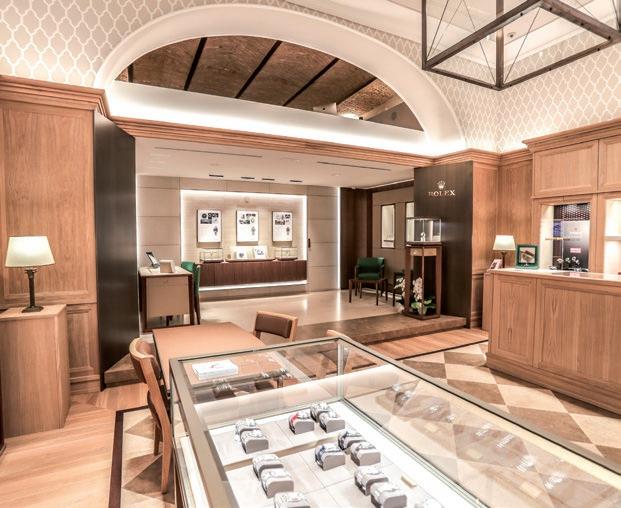


 di /by Paolo Condò
di /by Paolo Condò
Noi triestini veniamo abituati fin da piccoli a guardare verso l’alto. Il colle di San Giusto. Le Scale dei Giganti. I palazzi sulle Rive. Il Santuario di Monte Grisa. Volgi gli occhi al cielo, ragazzo, tutto ciò che Trieste custodisce di bello per te è verticale, come ben sanno i radi ciclisti alle prese con i faticosi saliscendi cittadini: Salita Promontorio, Erta Sant’Anna, Scala Santa. Ricordo un amico entusiasta della sua nuova casa, in un quartiere satellite chiamato Altura. Non credo occorra altro per spiegare la nostra predisposizione al basket. Se sei abituato a guardare in alto, il primo oggetto che vedi in un centro sportivo è il canestro. Voglio dire: una porta di calcio è alla tua altezza, un campo di tennis ti pare in salita soltanto se giochi contro uno (tanto) più forte, la prima cosa che ti insegnano nella gita scolastica sulla neve è scendere con gli sci, quando ci sono poche navi in porto e il fondale dei Topolini è pulito, ti immergi. Nel basket balzi, ti elevi, ascendi, fin dalla palla a due che premia chi salta un centimetro più in alto dell’avversario. E il destino del triestino è innalzarsi, gli amici mi raccontano addirittura di un’ovovia per salire in Carso, la prossima volta vengo con i Moon Boot; che poi la Luna è proprio lì –bella in alto, luminosa– non ha il canestro incorporato come Saturno ma assomiglia a una palla, e gli spicchi ce li possiamo disegnare sopra. Guarda in alto, triestino. E mentre gli altri attaccano il chiodo, tu attacca il ferro.
Triestini are quite used to point their gaze upwards. It is something we pick up as children. The hill of San Giusto; the Staircase of the Giants; the tall seafront facades overlooking the Rive; the Temple of Monte Grisa. Look up, child, for Trieste offers her most precious treasures to those who are not afraid to climb. The cyclists pushing their way up the city’s steep slopes know it is true: Salita Promontorio, Erta Sant’Anna, Scala Santa. I distinctly remember the joy in the eyes of a friend of mine, who had just moved to a suburb area called Altura (lit. high ground). No wonder, therefore, that the city’s youth are naturally predisposed to basketball. If you are used to look upwards, the first thing you will see in a sports court is the hoop. What I mean to say is: a football goal is no taller than person; a tennis court only feels like an upwards incline when you are playing against a formidable adversary; when you are learning to ski, the first thing you are told is to keep your eyes on the slope. As for the sea, when the ships are off the coast and the seabed in front of the Topolini is clearly visible, you just dive in. Basketball is all about vertical jumps: the very start of a game is called jump ball, as players fight for possession outleaping each other. I am even told that Trieste will soon have its own cable car to travel from the city centre to the Karst Plateau – next time I visit, I will be wearing my Moon Boots. After all, the Moon looks so close from here, shining beautiful and bright: true, unlike Saturn, the Moon has no incorporated ring. Still, it may look like a basketball, just try to imagine the black ribs crossing its surface. Look up, Triestino. And while the world buckets along, you focus on getting those buckets.
La casa del basket triestino, dove abitano le grandi emozioni
The home of Trieste’s basketball, the place of great emotions

Quale miglior metafora per rappresentare una storia: il PalaTrieste “Cesare Rubini” è la casa del basket triestino, quelle mura che accorpano nel cemento una radicata passione fatta di cadute, risalite, delusioni e gioie immense. Iniziato nel 1994, concluso nel 1999, cinque lunghi anni di cantiere che portano a compimento quello che doveva essere il teatro per importanti successi nazionali ed internazionali sotto l’egida Stefanel. “Le cose si ottengono quando non si desiderano più” diceva Cesare Pavese, anche se i triestini hanno liberato l’Araba Fenice dalle ceneri trasformando il PalaTrieste nel simbolo di una rinascita, partita dal basso. Nel pieno stile di una città di confine, nell’incrocio di razze e culture in cui si è figli di tutti e di nessuno, l’arena nel corso del tempo ha mutato il nome, da PalaRubini (nel 2011) in onore del più grande atleta che la terra di Svevo ha dato (Cesare Rubini ndr.) al pirotecnico periodo Alma fra serie A2 e massima serie (nel 2016), dando il via al più classico abbinamento dell’era moderna con marchi di un certo calibro, sfociato nel recente abbinamento con il colosso assicurativo Allianz. Un’arena a “ferro di cavallo”, con una meravigliosa
copertura a cupola in legno lamellare da 6.943 posti a sedere, progetto nato per dare una multidimensionalità alla struttura, per rendere flessibile l’organizzazione di un evento sportivo come di un concerto o di un qualsiasi spettacolo; ambizioso e lungimirante intento che però ha visto il preponderante e pieno vissuto fra due canestri, forte della concessione dell’arena dal Comune alla Pallacanestro Trieste. Tanti “pienoni” in quasi 25 anni di gestione, non più il selvaggio ammassarsi dietro le porte del vecchio amato Chiarbola ore prima dei match che contavano, ma un educato pellegrinaggio alla “Mecca” del basket triestino. Nei playoff di serie A2 il PalaTrieste è diventato addirittura troppo stretto per la tracimante passione locale, con richieste per 10 mila biglietti almeno. Stesso afflato caldo della curva disassata di Chiarbola propagato dalla Curva Nord lungo gli “anelli” della nuova arena, campioni applauditi per l’ultima volta come Conrad McRae, altri rimasti nel cuore della gente come Ivo Maric, o espressioni di una identità forte cittadina come Pecile, Cavaliero, Coronica, Deangeli, Ruzzier, Bossi. Istantanee che meriterebbero un posto d’onore all’interno del cuore pulsante alabardato, magari lungo quei corridoi ingrigiti e freddi che distribuiscono il flusso al suo interno; il “museo del basket” avrebbe un luogo, il più adatto per elevare il senso di appartenenza, il più simbolico a sostenere le strutture portanti di una storia in continua evoluzione. Potrebbe coincidere con la volontà della nuova proprietà americana di proiettarsi al futuro, un restyling del PalaTrieste a tutto tondo, in senso tecnologico, avveniristico col principio chiave che governa lo sport professionistico negli States, cioè uno spettacolo degno di essere vissuto; siamo alla confluenza di due correnti opposte, quella fredda del confezionamento di un prodotto e quella calda del pathos latino imprescindibile, due mari che si abbracciano in nome della Pallacanestro Trieste; “se la corrente ti sta portando dove vuoi andare, non discutere” e vivi l’emozione cestistica al tuo massimo.

“Nei playoff di serie A2 è diventato addirittura troppo stretto, con richieste per 10 mila biglietti almeno.”
“During the A2 League playoffs PalaTrieste was sold out, with seat demands reaching 10,000 units.”
No other place represents this story of passion quite like PalaTrieste “Cesare Rubini”: the home of Trieste’s basketball, this concrete arena has witnessed falls and comebacks, bitter disappointment and wild joy. Built between 1994 and 1999, the Dome, also known as PalaSport, was meant to become a national and international stage for Pallacanestro Trieste during Stefanel’s sponsorship. As Italian poet Cesare Pavese used to say, “You only get what you no longer crave” –and yet, like a phoenix rising from its own ashes, Triestini were able to turn their PalaSport into a symbol of rebirth. Perhaps unsurprisingly, considering the city’s position at the crossroad of multiple peoples and cultures, the Dome was never particular about its denominations: officially known as PalaRubini in 2011, after basketball hall-of-famer Cesare Rubini (possibly the greatest Trieste-born athlete of all times), it was renamed Alma Arena in 2016, as the team moved (back) up to the top league. This was the first time the arena was given the name of the team’s current sponsor, which is now insurance and financial services giant Allianz. The horseshoe design of the arena is complemented by the beautiful dome structure of bent laminated wood and has a capacity of 6,943 seats. It was designed to be flexible, able to provide a multi-dimensional space that could host a wide range of events, from indoor sporting matches to concerts and shows: an ambitious and visionary project – perhaps a little too ambitious, since, so far, the Dome has hosted mainly basketball games, especially after its concession to Pallacanestro Trieste. The large crowd of basketball fans have never missed a match in the past 25 years – having elected this perfect accommodation the new Mecca of Trieste’s basketball, after the years of endless queues outside the old Chiarbola arena hours before each game. During the A2 League playoffs the Dome was sold out, with seat demand reaching 10,000 units. Triestini brought to the rings of the Dome the
same enthusiasm that used to run hot through the tilted stand of Curva Nord of Chiarbola arena − cheering heroes like Conrad McRae one last time; remembering beloved champions such as Ivo Maric; or celebrating the city’s pride kept high by players like Pecile, Cavaliero, Coronica, Deangeli, Ruzzier, and Bossi. Snapshots deserving a place of honour in the beating heart of the halberd city, perhaps displayed along the now bare and cold concrete walls of the arena access tunnels – a basketball museum, in the place that best expresses Trieste’s sense of belonging, while also representing a story that is still being written. An idea that may appeal to the current American owners: their forward-looking restyling plan, especially in terms of technology, follows the principles of American professional sports, which is first and foremost a show worth watching. Two opposite trends are about to join: the cold, calculating job of product selling, and the warm, passionate force of Italian culture. Two seas about to merge into one, in the name of Pallacanestro Trieste. “If the stream is taking you where you want to go, do not fight it”, simply live the hoops frenzy to its fullest.
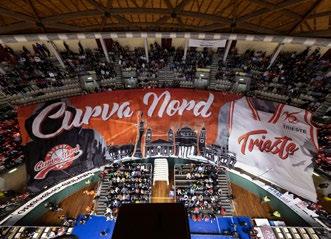
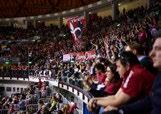
Un’arena a “ferro di cavallo”, con una meravigliosa copertura a cupola in legno lamellare.
The horseshoe design of the arena is complemented by the beautiful dome structure of bent laminated wood.P. Giovannini
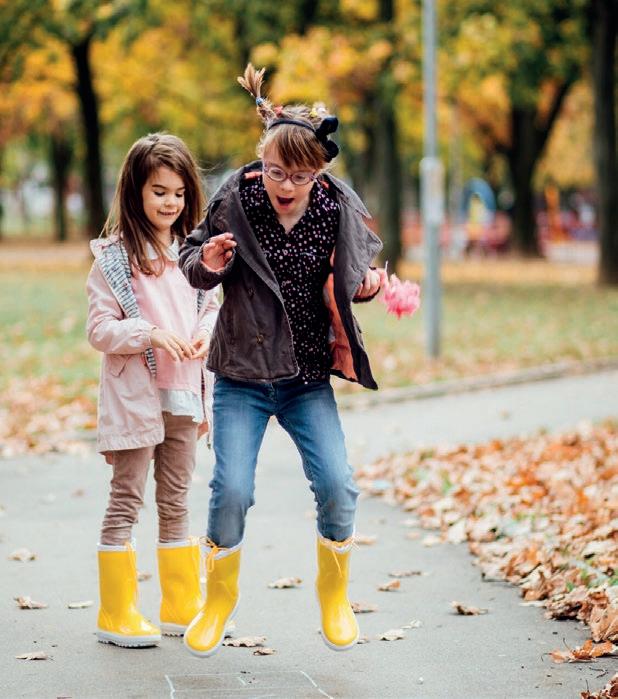
La pallacanestro triestina in versione americana
Italian basketball the American way
La sensazione era che quel ragazzino smilzo avesse celato l’immensità dei sogni nelle scarpe, enormi, ma ideali per seguire orme e prodezze di Joe “Jellybean”, considerato il precursore di Magic Johnson, dopo essersi permesso una imperiosa schiacciata in faccia a Kareem Abdul Jabbar. Una manna per il nostro basket e per il figlioletto. E pazienza se per assistere da vicino alle esibizioni del papà girovago dovesse armarsi di stracci per pulire il parquet. Niente male la contropartita: una bicicletta di colore rosso. Ma l’imberbe prodigio, a Reggio Emilia, ennesima tappa della famiglia Bryant, ammirava stupito anche un giovane dal fisico statuario e si offriva di portargli orgogliosamente il borsone alla fine dell’allenamento. Che strana coppia, il futuro rettile nero imprendibile dei Lakers, ovvero il “Black Mamba”, e il “mulo” di Trieste, Graziano Cavazzon, cresciuto alla Ginnastica Triestina. All’apice della fama, quando i cronisti lo stuzzicavano chiedendo se il suo egoismo in campo fosse imputabile ai trascorsi nel bel paese, Kobe ribatteva imperturbabile: “A parte la mia notevole elevazione, il resto lo devo all’Italia”.
Te la do io l’America: che sia la replica di un vecchio sketch, l’invito a leggere il libro di ricette di Joe Bastianich, una minaccia, o una promessa? Più semplicemente, una lezione pratica. Il diciottenne Giulio Iellini guarda e impara. Non c’è tempo per oziare con l’ex studente modello di Princeton, che si perfeziona a Oxford e mette a
“A parte la mia notevole elevazione, il resto lo devo all’Italia.”
Kobe Bryant
“Aside from my considerable vertical jump, I owe everything else to Italy.”
Kobe Bryant
disposizione di Milano la sua classe cristallina. Va per vetrine, senza essere, però, un turista per caso. Infatti, osserva, immobile, gli oggetti, allo scopo di affinare la visuale periferica. Nemmeno l’1 aprile 1966, giorno della storica sorpresa-impresa, sembra interessato alle bellezze di Bologna. Il mattino che precede la sfida fra Simmenthal e Slavia Praga convince l’allibito custode ad aprire il palasport e, scalzo, si esercita ai tiri liberi. Rimane per nulla soddisfatto, poiché ne ha infilati “solo” 88 su 100. Capitan Gianfranco Pieri (alle Olimpiadi di Roma aveva lasciato di stucco illustri personaggi come Jerry West, Oscar Robertson e Jerry Lucas), l’unico a indossare le mitiche scarpette rosse, in serata alzerà la prima Coppa dei Campioni. Bradley diventerà una stella dei Knicks di New York vincendo
due anelli nell’NBA (i compagni, cattivelli, lo chiameranno “Dollar Bill”, per il braccino corto e non per la mano fatata) e da senatore di lungo corso tenterà, senza successo, la scalata alla Casa Bianca, nonostante l’appoggio di un certo Michael Jordan.
C’è, però, chi è capace di trovare l’America in Italia. Nella Trieste senza pace e identità, il Governo Militare Alleato aveva “prestato” due yankee di non eccelsa levatura, Robert Evans e John Philips, rimpiazzati dal talentuoso John Mascioni, architetto con l’obiettivo di ottenere la terza laurea, traguardo che gli avrebbe garantito l’assegnazione gratuita di un appartamento negli States.

Ironia della (buona) sorte è che la Milano del domani viene abbozzata in… “California”. Che, poi, altro non è che un angolino dello stabilimento balneare “Ausonia”, dove Adolfo Bogoncelli, folgorato dalla beata gioventù giuliana, cattura Cesare Rubini per portarlo in terra lombarda in modo da allestire la Triestina Milano e con l’intento, non secondario, di tenere viva la questione dell’italianità dell’alabarda. Sarà ripagato adeguatamente dal gruppo di irriducibili che, col marchio Borletti, dominerà la scena nazionale per un lungo periodo e avrà la soddisfazione di misurarsi con i fantastici Harlem Globetrotters davanti ai ventiduemila spettatori del Vigorelli.
L’imprenditore trevigiano forgia il Principe in tutto e per tutto. Una nobiltà conquistata con la forza della povertà cui si aggiungeranno ulteriori etichette: Padrino, a giudizio dei detrattori, Monacone per gli amici della pallanuoto (il vero amore) e compagni dell’oro olimpico conquistato ai Giochi di Londra. Cesare indossa con disinvoltura numerosi abiti, da giocatore, allenatore e dirigente. Sta con un piede in palestra e con l’altro in piscina raccogliendo scudetti e attestati a non finire nelle varie competizioni, nella certezza che alla gloria è preferibile la gloria con i quattrini. Così opterà per la palla a spicchi, “attrezzo” di lavoro e fonte di ragguardevoli opportunità.
“Ironia della (buona) sorte è che la Milano del domani viene abbozzata in… ‘California’.”
“U.S. Funnily enough, the future champions of Olimpia Milano started off in ... ‘California’.”
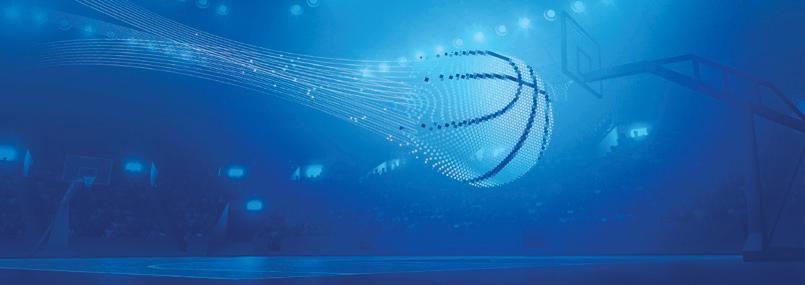
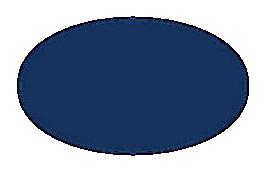

De Coubertin non avrebbe potuto figurare neppure in panchina in una squadra che deve rispettare un comandamento fondamentale: chi dà per primo non è mai in debito. Sempre leoni in campo, spesso animali notturni pronti a combinarne di cotte e di crude, fidando nelle eccezionali doti di recupero. Si rende conto che non si vive soltanto di una debordante carica agonistica. Sa individuare gli uomini giusti, traduce efficacemente idee e progetti, può contare su una valida rete di collaboratori persino oltre oceano, tuttavia non conosce l’inglese e zoppica quanto al tatticismo da sfoderare durante gli incontri. Ecco, allora, il paracadute rappresentato da Sandro Gamba. Per completare la “rosa” di una formazione impegnata su vari fronti non si fa scrupoli nello strappare i fiori dal giardino di casa (Renzo Vecchiato è uno di questi), fra la disapprovazione dei suoi concittadini.
Un Principe non poteva che occupare un posto di riguardo nel regno del basket. La Hall of Fame di Springfield, nel Massachusetts, lo accoglie con il gratificante messaggio del Presidente Clinton. Nello stesso anno (1994) la sua città natale, da lui definita bella addormentata e prigioniera di un eterno scontento, gli consegnava il prestigioso “San Giusto d’oro” mentre la Trieste dei canestri assisteva, dopo quasi mezzo secolo, al secondo esodo verso Milano. Guarda la combinazione, protagonista del trasloco, stavolta originato dal matrimonio di interesse, è ancora un industriale della Marca, Bepi Stefanel, che si butta alle spalle rimpianti e polemiche.
GA
M BA
ENGLISH TEXT
22 IES, TRIESTE SPORTSLIFE N°22 –Autumn 2023 Memories
young, statuesque scorer, who let little Kobe carry his bag after training. The two made quite a pair: the future L.A. Lakers’ “Black Mamba” and Trieste’s “mulo” (i.e., Triestine dialect for “guy”) Graziano Cavazzon, who grew up playing for Ginnastica Triestina. At the peak of Kobe Bryant’s career, when reporters teased him about his selfish game style, blaming it on his childhood years in the Bel Paese, the Black Mamba would not flinch: “Aside from my considerable vertical jump, I owe everything else to Italy”.
“Te la do io l’America” (lit. I’ll show you America): a fitting refrain, born from an old sketch, and echoed in reference to Joe Bastianich’s cook book, both a threat and a promise…or, quite simply, a lesson: 18-year-old Giulio Iellini watched and learned. There was no time to waste as long as he was playing alongside Princeton and Oxford graduate Bill Bradley for Olimpia Milano. He was an avid observer, never missing any detail. Not even on 1st April 1966, an historic day for Olimpia Milano, before it was renamed Simmenthal Milano, at the 1965-66 FIBA European Champions Cup (European top-tier level professional basketball club competition, N/T), did he let himself get distracted by the
sights of the city of Bologna, where the game was to be held. On the eve of the final against Slavia VŠ Praha (now USK Praha N/T), Iellini managed to talk an astounded caretaker into unlocking the Palasport arena’s doors at the break of dawn, so that he could practice (barefoot) his free throw. When he came out, he was disappointed because he could “only” hoop 88 out of 100 shots. That same night, Captain Gianfranco Pieri (who had been able to amaze basketball giants such as Jerry West, Oscar Robertson, and Jerry Lucas at the 1960 Summer Olympics in Rome, and who was the only player from the legendary Little Red Shoes formation) raised the team’s first Champions Cup. Seven years later Bradley joined the New York Knicks, winning two NBA championship rings (and earning the nickname “Dollar Bill”, because of his frugality, rather than his talent), before becoming U.S. Senator and running in the 2000 presidential primaries – he fell short, despite the endorsement of basketball star Michael Jordan, among others. There are also those who found America in Italy. The Allied Military Government of Occupied Territories in Trieste, still far from achieving its own peace and identity, brought in two

“Cesare Rubini indossa con disinvoltura numerosi abiti, da giocatore, allenatore e dirigente.”
“Cesare Rubini nonchalantly switched between his many roles: player, coach, manager.”
(unexceptional) Yankees, Robert Evans and John Philips, later replaced by talented John Mascioni, then an ItalianAmerican architect working at his third degree to obtain free accommodation in the U.S.
Funnily enough, the future champions of Olimpia Milano started off in … “California”, i.e., the nickname of a corner of one of Trieste’s oldest bathing establishments, Ausonia. This is where Treviso-born businessman and sports manager Adolfo Bogoncelli met future hall-of-famer Cesare Rubini, and was immediately won over. Bogoncelli brought Rubini to Milan to join the roster of his Triestina Milano (1945 team sponsored by Italian liberal-socialist and anti-fascist Action Party with the aim of promoting Trieste’s Italian identity). After a brief interval as Pallacanestro Como, in 1947 Bogoncelli merged former Triestina Milano and Borletti’s Olimpia to form a new society, known as “Borolimpia”. Bogoncelli’s original dream team repaid his vision and efforts playing against the spectacular Harlem Globetrotters in Milan’s velodrome “Vigorelli” in front of 22,000 viewers.
Cesare Rubini, known as “il Principe” (the Prince) despite his humble origin, owes much of his success to Bogoncelli’ managerial vision. He was also nicknamed “il Padrino”, mostly by his detractors, and “O’ Monacone” (lit. big monk) by his water polo friends and fellow Olympic gold medallists, who shared the 1943 victory in London. Cesare nonchalantly switched between his many roles: player, coach, manager, … one foot on the basketball court, the other in the water, collecting accolades and championship titles in both disciplines. He was deeply aware that fame and glory without money do not last, which is why he eventually set aside water polo (his true love) and devoted his professional life to basketball and its numerous career opportunities.
De Coubertin, founder and president of the International Olympic Committee, would never have made it in a team that must follow one rule: the first who gives owes nothing to anyone. Lions on the court, owls in the night, partners “in crime”, coming up with the craziest of stunts, confident that they would always recover in time for the next match. Cesare knew that competitiveness is not everything. He could spot the right man for each role, and effectively translate ideas into actions, knowing he could rely on a tight network of cooperation spanning all the
way across the Atlantic. However, he did not speak English and his tactical skills needed honing. Which is why he brought in Sandro Gamba. The Prince was ruthless when it came to completing his ideal formation and did not hesitate to pillage the team of his home town to get the players he wanted (such as Renzo Vecchiato), despite the disappointment of his fellow Triestini.
A Prince had to have his throne in the royal hall of basketball. Rubini was inducted into the Basketball Hall of Fame in 1994, as announced by then U.S. President Bill Clinton. In the same year Trieste, his birthplace and, in his words, a sleeping beauty prisoner of her own unending discontent, honoured him with the prestigious “San Giusto d’oro” award – at the time when the city was, once again, being drained of her players, leaving for Milan. And, for the second time, the mastermind behind the drain was a businessman from the area of Treviso: Bepi Stefanel had brought Trieste’s team to the A League, but transferred his sponsorship to Olimpia Milano, amidst unforgotten regrets and controversies.
“Un Principe non poteva che occupare un posto di riguardo nel regno del basket.”
“A Prince had to have his throne in the royal hall of basketball.”


Dal dimenticato Richard Montgomery fino all’indimenticabile Javonte Green, tutti gli ambasciatori del basket USA in città.
From long-forgotten Richard Montgomery to unforgettable Javonte Green: all the ambassadors of American basketball to Trieste

Predicatori e peccatori. Ex campioni Nba ed ex Harlem Globetrotter. Campioni e bidoni. Lunghi che nel volo sopra l’Oceano perdevano misteriosamente centimetri e altri che perdevano la capacità di giocare a basket. Giocatori che si innamoravano dell’Italia e altri che si innamoravano di un’italiana. Il basket triestino nella sua storia a stelle e strisce non si è fatto mancare niente. Nemmeno la disputa su chi sia stato in realtà il primo Usa della pallacanestro a Trieste. Qualcuno ricorderà negli anni Settanta Steve Brooks in maglia Lloyd Adriatico ma prima ancora, con la Sgt Stock, ci fu Richard Montgomery, californiano, arrivato in Italia a bordo del transatlantico Giulio Cesare nel 1957, che a Trieste trovò il primo ingaggio europeo e l’amore della sua vita.

La storia degli statunitensi al Palasport di Chiarbola (il PalaTrieste, o PalaRubini, o Allianz Dome doveva ancora arrivare) si divide in quelli arrivati prima di LUI – tra cui il predicatore Butch Taylor -e quelli giunti dopo di LUI. Il lui in questione è lo straniero più amato di sempre dai tifosi triestini. Rich Laurel. Quello che sarebbe diventato l’idolo di una città rischiò di venir tagliato appena presentatosi in palestra. Il coach, il vulcanico Dado Lombardi, appena lo vide entrare a Chiarbola aggredì verbalmente il general manager Ettore Zalateo.
“Ma chi mi hai portato? Guardalo, magro, sembra malato”. Zalateo, che prima di Laurel aveva già visto bocciare una lista di possibili candidati, non le mandò a dire. “Tientelo”. Fu l’affare della vita.
Il magrolino con la fascetta bianca sulla fronte incantò Chiarbola e portò per la prima volta la Pallacanestro Trieste
targata Hurlingham in serie A1.
Per interrompere un idillio così doveva accadere qualcosa di clamoroso. Marvin Barnes. Per rendere l’idea: alcuni sprazzi del basket più celestiale visto a Trieste ma –soprattutto– l’uragano che spezzò il giocattolo Hurlingham e scosse Trieste con il pasticciaccio passato alle cronache come lo scandalo di via Buonarroti. Quello che negli Usa era chiamato “Bad News” (Cattive notizie, e magari qualche sospetto poteva pure venire….) in un appartamento triestino diventava una Sex Machine. Droga e sesso. Dalle pagine di sport a quelle della cronaca nera. Fine del sogno. Addio Bad News. E bye bye a Rich Laurel. Tornato in età matura a Trieste per viverci.

Storie di americani. Di presuntuosi. Ammettiamolo: succedeva che giocatori arrivassero dagli States approcciandosi al basket italiano con superficialità, convinti che bastasse esprimersi al minimo sindacale per fare la differenza. Sbagliando. Difficile ricordare, ad esempio, una figura più barbina di quella rimediata da Jerome Harmon, impappinatosi perdendo una scarpa sul parquet perché non l’aveva allacciata bene.
Storie di americani. Di rimpianti. Il principale è legato a uno dei giocatori più egocentrici, egoisti ma anche dannatamente forti visti da queste parti. Steve Burtt è stato una formidabile macchina da canestri, puntava alla retina perché il suo credo cestistico era “io contro gli altri”. L’unica volta in cui tutti avrebbero voluto che andasse dritto a canestro ebbe la sciagurata idea di passare il pallone a un compagno, peraltro quello dotato di minor talento offensivo. E fu così che l’allora Illycaffè Trieste,
“Il basket triestino nella sua storia a stelle e strisce non si è fatto mancare niente.”
“The stars-and-stripes chapter of Trieste’s basketball history truly has it all.”
costruita sulle ceneri lasciate dal trasloco della Stefanel a Milano, non vinse una incredibile finale di Coppa Italia contro Treviso…
Storie di americani. Di lacrime e ricordi. Conrad McRae era un giovane lungo in grado di volare. Lo chiamavano “Mangiafuoco” perché lui, con un pallone infuocato, era riuscito a schiacciare. Talento atletico impressionante, qualche uscita sopra le righe ma gliela perdonavi perché era un generoso. E non solo d’animo. Accettò di rinviare un viaggio negli Usa dopo la notizia della morte del padre per aiutare Trieste a espugnare il PalaEur di Roma nei play-off. L’uomo che sapeva volare aveva un sogno: giocare stabilmente nella Nba. Ma il destino si rivelò l’avversario più implacabile: in un maledetto giorno di luglio, nel 2000, in attesa di una nuova occasione nella Summer League, il cuore lo tradì. Uno choc per tutti i tifosi di Trieste che lo adoravano e gli avevano dedicato un coro. Storie di americani. Di scommesse vinte. La Pallacanestro Trieste nell’estate del 2016 pesca nella terza lega spagnola, dallo sconosciuto club del Peixe, l’esterno Javonte Green. Atletico è atletico ma è uno degli stranieri con il curriculum più scarno mai visti da queste parti. Ci pensa il buon Green a fugare i dubbi. Una forza della natura. La dimostrazione vivente del divertimento e della spettacolarità del basket. Riporta Trieste in serie A. Impossibile trattenere ancora un talento così. Va in Germania a Ulma e poi va a giocarsi le sue carte nella Nba. Riuscendoci, visto che ci gioca tuttora. Trieste si accontenta di seguirlo da lontano. La porta del PalaTrieste per Green però resta sempre aperta.
Preachers and sinners. Former NBA stars and Harlem Globetrotters. Champs and scams. Giants, who mysteriously lost a few inches or their ability to play as they flew over the Atlantic to land in the Bel Paese. Players that fell in love with Italy, others who fell in love in Italy. The stars-and-stripes chapter of Trieste’s basketball history truly has it all – including an ongoing debate to determine who is the first American basketball player who joined Trieste’s team: most would indicate Steve Brooks, who played for Lloyd Adriatico in the ‘70s; yet others could point out that Richard Montgomery actually reached Trieste on ocean liner “Giulio Cesare” in 1957: the Stock Trieste’s jersey marked the first European contract signed by this Californian player, who found the love of his life in the city of Trieste.
Before PalaTrieste, PalaRubini, and Allianz Dome, it was Chiarbola Palasport indoor sporting arena that witnessed a constant flow of American players feeding the roster of Trieste’s home team throughout the decades. The timeline, however, is divided into a “before” and an “after”: those who came before HIM – including preacher Butch Taylor, and those who came after HIM. The watershed is Rich Laurel, Trieste’s most beloved foreign basketball player. Laurel’s Triestine adventure got off to a rocky start: the first time he showed up for training, hot-blooded coach Dado Lombardi took a look at him and flew into a rage, verbally attacking general manager Ettore Zalateo, “Who is this supposed to be? Look at him, all skin and bones, he looks ill”. Zalateo had already had enough of Lombardi

“Lo straniero più amato di sempre dai tifosi triestini: Rich Laurel.”
“Rich Laurel, Trieste’s most beloved foreign basketball player.”
rejecting potential candidates, so he cut him short: “He is all yours”. It was the deal of the century. The skinny American with his white headband immediately cast his spell over the entire arena and led Hurlingham Trieste to its first time in the A1 League.
Only something incredibly powerful could destroy such an idyllic picture. Or someone: Marvin Barnes. His name is synonym with some of the most spectacular games ever seen in Trieste, as well as the hurricane that wiped Hurlingham Trieste off the map and filled Trieste’s headlines with the scandal of Via Buonarroti. In the one year he played in Italy, Marvin “Bad News” Barnes (perhaps the most fitting name of all times) spent less time on the basketball court than he did behind the closed doors of his Trieste flat, which quickly became his personal temple of sex and drugs. His name slowly drifted away from the sports section, ending up first in the gossip columns and then in crime news. The idyll was over. Farewell, Bad News. So long, Rich Laurel (who would come back to Italy decades later to live in Trieste).
Americans and their American stories. Tales of arrogance. Let’s be honest: more than a few U.S. players came to Italy thinking they could very well afford to laze about, putting little to no effort into their game and still make a difference. But they were wrong. Suffice it to mention the humiliating view of a player like Jerome Harmon stumbling across the court and losing his shoe, because he could not be bothered to tie it properly.
Americans and their American stories. Tales of regret. The greatest one concerning Steve Burtt, one of the best, yet also most egotistical and self-centred
players ever seen in these parts. Burtt was a scoring machine, eyes constantly fixed on the net, following a strict “me against the world” mindset. The only time his selfishness was actually needed to score, he had the unfortunate impulse of acting in accordance with his point guard position for once, and passed the ball to the teammate with the least offensive skill. It was the Italian Basketball Cup final, Illycaffé Trieste had just recovered from Stefanel’s defection to Milan, and Burtt’s mistake costed Trieste the national title, which was won by Benetton Treviso instead…
Americans and their American sto ries. Tales of tears and memories. Young centre Conrad McRae could fly. He was nicknamed “Mangiafuoco” (lit. fire eat er) because of his slam dunk with a ball that was actually on fire. A tremendous talent, a little over the top, perhaps, but that was easy to forgive, for he was also a generous player – and a generous soul. After his father died, he agreed to postpone his flight to the U.S., because he would not abandon his teammates
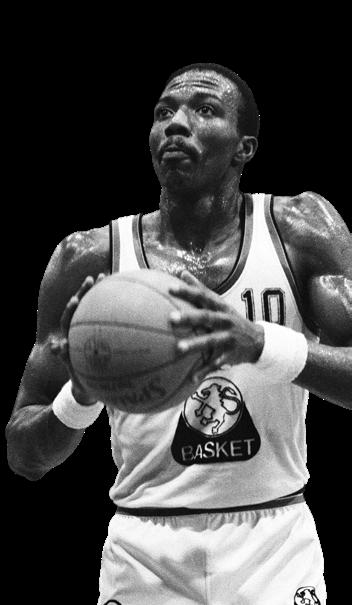
“Storie di americani. Di lacrime e di ricordi.”
“Americans and their stories. Tales of tears and memories.”Marvin Barnes

during the play-off match at the PalaEur in Rome. The man who could fly had one dream: the NBA. But fate, it turned out, had other plans for Conrad: on that cursed day of July 2000, waiting for his second chance in the Summer League, his heart gave out. When the news reached Trieste, basketball fans were devastated: they still loved him and had even made a chant for him.
Americans and their American stories. Tales of successful bets. In 2016 Pallacanestro Trieste fished out a dark horse of sorts: small forward Javonte Green, who was playing with Marín Peixegalego (“Peixe”) of the Spanish third division. He was athletic, yes, but his game record was the shortest a foreign player had ever brought to Trieste. Green let his game speak for itself. He was a force of nature, the very expression of the fun and entertaining side of basketball. He quickly led Trieste back to the top, the A League. His talent knew no limits: he went on to sign with Ratiopharm Ulm of the Basketball Bundesliga (Germany) and, in 2019, Green finally made his NBA debut. Trieste keeps track of his victories from afar. The doors of PalaTrieste will always be open for him.
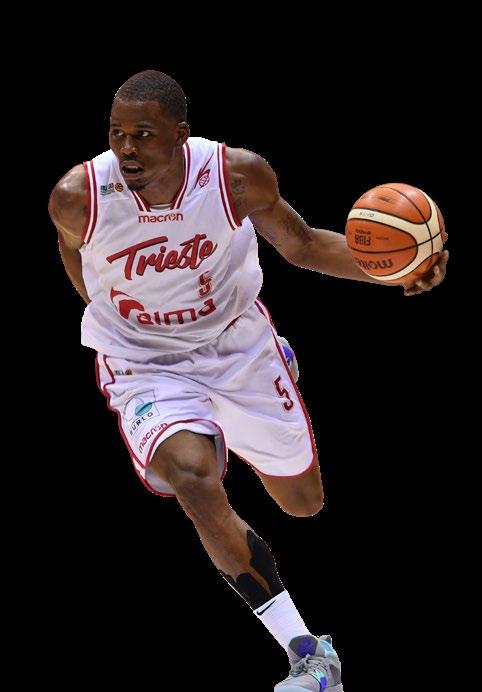
“La porta del PalaTrieste per Green resta sempre aperta.”
“The doors of PalaTrieste will always be open for Green.”Javonte Green


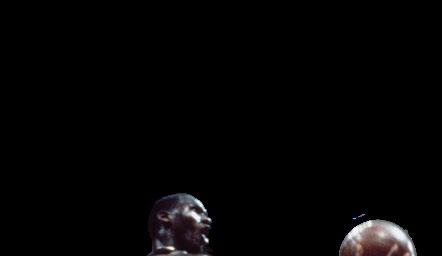
 Giovanni Marzini
Giovanni Marzini
Una memorabile serata con il mito
An unforgettable night with the legend
Ci sono giornate che un cronista non può dimenticare, perché restano scolpite nella sua mente, ora per ora. Se poi quel cronista è un poco più che trentenne, che ha la fortuna di viverle fianco a fianco con un mito del suo sport preferito, allora diventano pagine di storia destinate ad entrare nel suo Pantheon.
Era iniziato presto quel lunedì 25 agosto del 1985. Bisognava raggiungere Venezia per accogliere Michael Jeffrey Jordan, all’epoca 22enne. Era già qualcosa di più che una promessa. La Nike lo aveva ingaggiato per un contratto milionario e le sue scarpe si chiamavano già Air Jordan. Atterrava a Venezia proveniente da Parigi dove aveva lanciato una campagna pubblicitaria ad hoc. Ad attenderlo all’aeroporto ci sarebbe stato Bepi Stefanel ed un manipolo di dirigenti triestini della società che da un anno appena vestiva l’arancio e il nero del marchio veneto. Il blitz triestino di Jordan per un’amichevole a Chiarbola era stata un’autentica genialata, costata un bel po’ di soldini al nostro sponsor. Ma come certo saprete, si sarebbe trasformata in una clamorosa operazione di marketing, anche per un piccolo –poi diventato “storico”– particolare.
“A sensational marketing operation, especially thanks to a tiny detail that would be remembered as a milestone.”
Il vostro cronista avrebbe conosciuto MJ poco prima di mezzogiorno in un famoso ristorante di Venezia, blindatissimo per l’occasione. Pochissimi selezionati al tavolo, per un pranzo leggero a base di pesce. Jordan avrebbe dovuto raggiungere in macchina Trieste entro le 19. Partita programmata per le 20.30. Tre soli giorni di prevendita: avversaria la Juve Caserta di Bogdan Tanjević, già da anni squadra rivelazione della
massima serie. Pala Chiarbola praticamente sold out con richiesta di accrediti da mezza Italia.
A colazione appena iniziata, MJ fa una richiesta che ci lascia basiti. Ha saputo che Venezia ha un bellissimo campo da golf e chiede di poter fare qualche buca… Non sarà possibile. Per nostra fortuna. Si rispettano così i tempi e nel primo pomeriggio si riparte per Trieste.
Palazzetto gremito con buon anticipo. Perché già il riscaldamento diventa spettacolo, con le piroette di Michael. Il programma prevede primo tempo di MJ con maglia Stefanel, ripresa con la casacca bianca della Caserta di Tanjević, coach che quella sera entra per la prima volta a Chiarbola. Non sa ancora che quello sarebbe poi diventato il suo palazzo per otto anni. E la sua casa… per sempre! Al fianco di Jordan, con Santi Puglisi in panchina, il mito Bertolotti, l’artista Fischetto ed un manipolo di triestini, che ancor oggi conservano il nitido ricordo di quella sera: Zarotti, Colmani, Vitez, solo per citarne alcuni.
Il vostro cronista sta per godersi da par suo una serata indimenticabile. Seduto in postazione a bordo parquet, sta per iniziare la sua telecronaca del match per Telequattro Trieste. Palla a due, tutto pronto, si va!
Il ritmo e le giocate sono da esibizione NBA stile all star game, con la ricerca del preziosismo, anche se Caserta fa più sul serio. Per Boscia è un test match, a poche settimane dal via della stagione. Ma già dopo una manciata di minuti, ecco i trenta secondi che entreranno nella storia. Perché le scarpe bianco-rosse di AIR Jordan decidono di decollare dalla linea di tiro libero per
“Una clamorosa operazione di marketing, anche per un piccolo –poi diventato ‘storico’–particolare.”
To see Michael
concludersi con una strepitosa schiacciata, sigillata da MJ con il canestro ben stretto tra le mani del giocatore. Non sapeva il protagonista di quel gesto che in Italia i ferri sganciabili dal cristallo non erano stati ancora introdotti. Ed il tabellone si frantuma in mille pezzi. Qualche scheggia finisce pure sulla mia postazione, ma restiamo incolumi. A differenza del povero Lopez, l’uruguaiano di Tanjević, che finirà la serata in ospedale con i legamenti della mano recisi. Stagione finita prima di iniziare.
MJ, alla ripresa del match, dopo oltre mezz’ora persa per sostituire il canestro, giocherà l’intera partita in maglia Stefanel (Boscia non lo vuole con i suoi dopo l’incidente!) portando al successo Trieste senza mai far più una schiacciata, ma deliziando ugualmente la platea. E le scarpe di quel volo devastante, trent’anni dopo verranno battute all’asta a New York per oltre mezzo milione di dollari. Ma il vostro cronista, quasi 40 anni dopo, è in grado di svelarvi un piccolo grande segreto. Le scarpe usate in quel volo non sono quelle vendute all’asta, perché a fine partita Michael quelle indossate le aveva già regalate ad un giocatore di Trieste. Il suo nome… alla prossima puntata.

There are days in the life of a reporter one could never forget. Events that are fixed in one’s memory. Each second is carved in stone. Even more so if such events take place when said reporter is barely thirty years old and they involve the presence of the reporter’s basketball idol: those memories become pages of history, to be preserved and cherished forever. The 25th August 1985 was a Monday. We left from Trieste quite early in the morning to reach Venice in time to welcome then 22-year-old Michael Jeffrey Jordan. The young Chicago Bulls’ rookie was already showing more than promise. He had just signed a million-dollar contract with Nike, with the creation of Jordan’s signature shoe, called Air Jordan. He was supposed to land in Venice after shooting a dedicated commercial in Paris to promote his shoes. The welcome committee at the airport was led by Bepi Stefanel, who had just signed the sponsorship deal with the managers of Trieste’s home team, now wearing the brand’s orange and black uniforms. The one-night Nike exhibition game at Chiarbola arena in Trieste was a stroke of genius – and an expensive one at that. Yet, it turned out to be worth every penny, as it was destined to become a sensational marketing operation, especially thanks to a tiny detail that would be remembered as a milestone. Yours truly met MJ at lunch, behind the heavily secured doors of one of Venice’s famous restaurants. A small party of few selected guests and a light meal of fish courses. Jordan’s schedule was tight: he would reach Trieste by car just an hour and a half before the game, set to start at 8:30 p.m. that night. Three days of pre-sale tickets and the Chiarbola arena was already sold out, while entry accreditation requests kept pouring in from all over the country. The guest side was Bogdan Tanjević’s JuveCaserta, one of the best A League underdog teams at the time.
Just a few minutes into lunch MJ wrong-footed the entire party with an unusual request: he had read about Venice’s stunning golf course and would like to hit the links. Impossible, too little time – unfortunately for him, luckily for us. After lunch we left, on time, for Trieste. Hours before the game the arena was already packed: the audience was eager to see him, and, after all, even
“Il ritmo e le giocate sono da esibizione NBA stile all star game.”
“The game tempo and moves were pure exhibition, NBA All-Star style.”
a simple warm up is worth watching, when Michael Jordan is in the house. MJ would play the first half of the game wearing Stefanel’s colours, and then he would switch to the white jersey of JuveCaserta for the second half. It was coach Tanjević’s first time at Chiarbola arena: little did he know that he would spend eight years of his coaching career within these very walls – and that the city of Trieste would become his forever home. With coach Santi Puglisi in the bleachers, Jordan wore the orange and black of Pallacanestro Trieste, side by side with sensational swingman Bertolotti, artist Fischetto, and a handful of other Triestini who would forever remember that night: Zarotti, Colmani, Vitez, just to name a few.
I reached my courtside seat, ready for the play-by-play to be broadcast on Telequattro Trieste. All I knew at that point was that I was about to live an unforgettable night. Ready, jump ball, go!
The game tempo and moves were pure exhibition, NBA All-Star style, right from the start. JuveCaserta, however, seemed to mean business: it was a test match for coach Boša, a few weeks from the beginning of the season. And then it happens. Air Jordan’s red and white
sneakers take off from the foul line, one of His Airness’s spectacular mad ups. He flushes hard, sealing the dunk by firmly grabbing the net of the hoop. However, cut-out hooks had not been introduced in Italy yet. The glass of the backboard shatters. A few glass splinters reach the courtside, but the audience is unharmed. Unlike Tanjević’s Horacio “Tato” López, who ends up in the hospital with a serious hand ligament injury, which will cause him to miss the entire season. It took more than half an hour to replace the hoop. When the game could finally resume, it was decided that MJ would play with the Pallacanestro
Trieste side for the rest of the game (Boša no longer wanted him too close to his players after the accident). There were no more dunks that night, but Jordan put on quite a show to the audience’s delight, and Pallacanestro Trieste won. Thirty years later those red and white flying shoes sold for $560,000 at a Sotheby’s auction. However, I can let you in on a secret: the Air Jordan 1S sneakers that were auctioned off in New York are not the ones MJ was wearing that night. Immediately after the game, Michael gave his shoes as a gift to a member of his team. His name…will be revealed in the next episode.
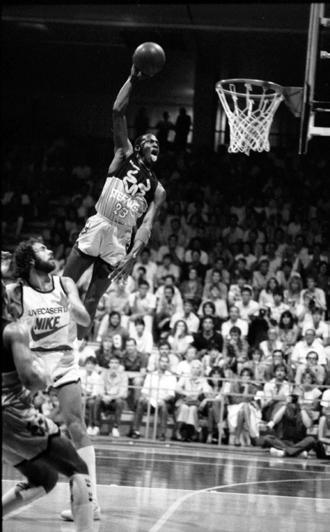
“Le scarpe di quel volo devastante, trent’anni dopo verranno battute all’asta a New York per oltre mezzo milione di dollari.”
“Thirty years later those red and white flying shoes sold for $560,000 at a Sotheby’s auction.”
 Guido Roberti
foto di /Photos by Linda Cravagna
Guido Roberti
foto di /Photos by Linda Cravagna
Non solo la palestra. I campi all’aperto, una passione che pervade i giovani triestini. “Muli, PCA o Revoltella?” Nei giorni di primavera è il dubbio che affligge i giovani cestisti, non paghi della sola attività in palestra, troppo affamati di questo sport per rinunciare ad un 3 contro 3 con l’unico dogma di dare spazio all’estro che in società talvolta è limitato nell’interesse del gruppo. Luoghi iconici a Trieste, i campi all’aperto di Piazza Carlo Alberto (PCA!) e Revoltella (nel parco omonimo), essi stessi un gergo triestino che pervade la fascia d’età in cui il lavoro è prospettiva lontana e l’ora alternativa allo studio si può concedere. In PCA ci si immerge in una architettura liberty che ricorda campetti open-air USA, e c’è un volto dipinto sui tabelloni. Mitja Gasparo, un ragazzo come tanti innamorato di basket, un ragazzo come tanti con un cuore a spicchi. Un ragazzo, come pochi, strappato alla vita a 24 anni da un dannato incidente. I capelli ricci di Mitja accompagnano le evoluzioni playground di tanti giovani, lì dove non c’è l’allenatore a tediarti per una tripla in più. Trieste è questo, provincia più piccola d’Italia e un concentrato di società operanti a livelli minibasket-giovanili da far invidia. Una trentina di società, migliaia di atleti, neanche la pandemia ha abbattuto i numeri. Un amore che varca le palestre e si sposta ai campi all’aperto. Dove chissà, si cela un futuro volto della Nazionale. In fondo dietro a un pallone c’è sempre un sogno. Non è più la Trieste dei ricreatori. Cambiano luoghi e modi, ma nel dna dei piccoli l’attrazione per questo sport sembra non subire alcun influsso discendente. “Time-out”, solo per dissetarsi, in PCA non c’è il coach a chiamarlo. “Val tutto”, dicono i giovani.
Indoor sports discover the open air: outdoor basketball is the new craze of young Triestini.
“Guys! PCA or Revoltella?” is the question echoing in young basketball players’ conversations on spring days: as temperatures rise, so does the desire to play outside, which, in basketball, means 3-on-3 games, where creativity rules the day. Trieste’s most iconic outdoor half courts are the one in Piazza Carlo Alberto (PCA!) and the one known as “Revoltella”, located in the park of the same name. Both have now become part of local youth jargon, usually associated with a couple of stolen hours after school, right before homework time. PCA’s atmosphere closely resembles that of U.S. streetbasketball backyards, here surrounded by liberty-style architecture, with the face of Mitja Gasparo watching over the court from the backboards. Gasparo was just an ordinary young man, who loved basketball, like so many of his peers. Unlike his peers, however, he met his end in a tragic accident when he was only 24. Today, his curly hair seems to sway still, as if his gaze was following the players’ moves – here, where no coach is going to yell at you for travelling, when no one else notices. This is Trieste: Italy’s smallest province (here referring to Italy’s secondlevel administrative division, N/T) and a powerhouse of biddy-basketball teams. Over thirty clubs and thousands of young athletes, whose passion for basketball was even stronger than the pandemic. So strong, in fact, that it is now spilling out of the city’s indoor arenas to invade outdoor courts. And, who knows? The future national team’s roster may be dribbling there right now – after all, behind every basketball there hides a dream. True: Trieste is no longer the city of ricreatori. Yet, while structures and places may change, there will always be a basketball genetic marker in young Triestini’s DNA. Someone calls “Time out!” for a quick gulp of water – no one in PCA is counting down seconds from the bleachers, anyway. “Everything goes”, this is the kids’ motto.

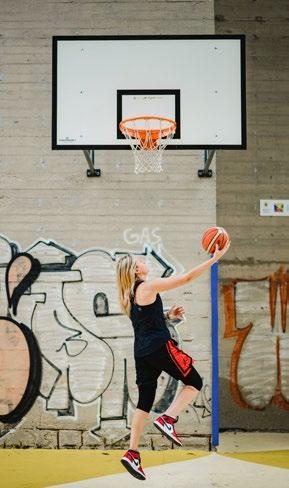
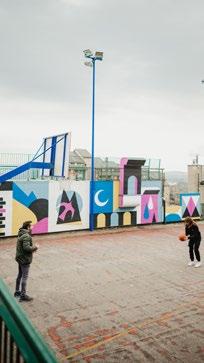 A sinistra /Left
Il campetto di Barcola
A sinistra /Left
Il campetto di Barcola
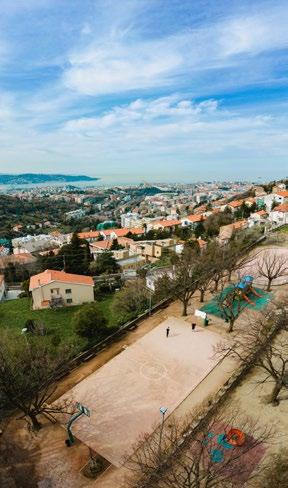
 A destra /Right
Piazza Carlo Alberto
A destra /Right
Piazza Carlo Alberto


Dopo anni di basket giocato, nel 2009 tra le palestre trentine e lombarde inizio a divertirmi con la fotografia sui campi da basket. Tornata a Trieste nel 2012 inizio a collaborare con alcune testate giornalistiche locali e nazionali, fotografando la serie A e guadagnandomi un posto tra i fotografi degli Europei a Koper. Dal 2014 unisco anche il mio amore per i bambini, e ad oggi sono una fotografa specializzata in bambini e famiglie e fotografia sportiva.

After playing basketball for years, in 2009 I started taking recreational pictures of basketball players between Trentino and Lombardy. In 2012 I moved back to Trieste and started working as A-League photographer for local and national newspapers, landing a place in the official news crew of Koper European Championship. In 2014 I was able to combine sport photography with my other passion, children- and family photography, eventually specialising in both fields.

L’uso efficiente delle risorse energetiche esige la ricerca di un punto di equilibrio tra obiettivi di risparmio ed esigenze produttive.

EnerProject identifica, implementa ed investe in soluzioni ingegneristiche e di processo, che permettano ai propri clienti di ridurre drasticamente la propria spesa energetica.
Sono clienti EnerProject:
1. Anna Frank, via Forlanini, 30
2. Brunner via Solitro, 10
3. Cobolli Strada Vecchia dell’Istria, 76
4. De Amicis via Colautti, 3
5. Fonda Savio via Doberdò, 20/4
6. Gentilli via di Servola, 127
7. Lucchini via Biasoletto, 14
8. Nordio Pendice dello Scoglietto, 22
9. Padovan via Settefontane, 43
10. Pitteri via San Marco, 5
11. Ricceri via Reiss Romoli, 14
12. Stuparich viale Miramare, 131
13. Toti via del Castello, 1 - 3
1. Bor Basket strada di Guardiella, 7
2. Breg Basket San Dorligo della Valle, 462
3. Repubblica dei Ragazzi (Azzurra basket) largo Papa Giovanni, 7
4. Servolana basket via Soncini, 187
5. Campo del Kontovel Contovello, 152
6. Campo del Polet, Opicina via del Ricreatorio, 1
7. Asd Polisportiva, Opicina via degli Alpini, 128
8. M. Ervatti Borgo Grotta Gigante, 67
9. Campo Sportivo Villa Ara via Monte Cengio, 2
10. Circolo Canottieri Saturnia viale Miramare, 36
11. ASD Santos Basket Guardiella via Timignano, 2/1
12. Canestro pineta di Barcola
13. Campo di piazza Carlo Alberto
1. Don Bosco via dell’Istria, 53
2. San Vincenzo de’ Paoli via Ananian, 1
3. San Giuseppe Montuzza via Tommaso Grossi, 4 (solo 1 canestro)
4. Oratorio Sion, Centro Pastorale Paolo VI, via Tigor, 24
5. Oratorio San Michele al Carnale Piazza della Cattedrale, 4
6. Chiesa Parrocchiale San Luca Evangelista via Carlo Forlanini, 26
7. Don Dario via Umago, 5
14. Campo del Parco Revoltella
15. Borgo S. Sergio via Eugenio Curiel
Where do we play today?
The city, court by court

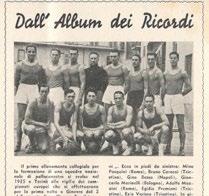
Se Trieste può essere considerata l’eponimo della pallacanestro italiana, i Ricreatori Comunali lo sono di Trieste. Dei 37 nazionali quasi la totalità si è avvicinata al basket nei ricreatori. Per divertimento, per gioco, indirizzati dagli insegnanti, dagli amici, dai genitori. Per loro la pallacanestro era un modo per stare assieme agli amici. Era un gioco, una sfida a segnare un canestro da più lontano dell’amico.
Ancora adesso Trieste è la città che ha fornito più atleti alla nazionale. Ben 37. Il mito Cesare Rubini, il grande Gianfranco Pieri, il classico Iellini, la torre Vecchiato, i più recenti Tonut, de Pol, Attruia, Pozzecco, Pecile, Cavaliero sono solo la punta dell’iceberg del movimento triestino. Che nei tempi eroici ne schierava anche tre o quattro per formazione.
Per questo Trieste meriterebbe di essere chiamata “la città della pallacanestro”. Come Zara che è (ufficialmente) Zadar, Grad košarke. Per l’appunto Zara, la città del basket. Con tanto di statua e viale in onore del suo giocatore più famoso, Krešimir Ćosić.
Il primo ricreatorio (Giglio Padovan) venne ufficialmente aperto il 25 aprile 1908 dopo parecchi anni di studio e tante pressioni all’amministrazione comunale da parte di Nicolò Cobolli. Fu uno dei più bei lasciti dell’amministrazione austriaca e da subito un successone tanto che in breve tempo se ne aggiunsero tanti altri, fino a raggiungere il bel numero di 15. Cioè uno in ogni rione della città.
L’apertura era pomeridiana con grande spazio alle “attività ginniche”. Cobolli
Quando in Italia non esistevano ancora i playground, a Trieste si giocava nei ricreatori. Uno in ogni rione. I ricreatori sono un’istituzione che esiste qui e solo qui.
Creati dal Comune nei primi anni del novecento, luoghi di ricreazione di impostazione laica per offrire un servizio sociale educativo e ludico, rivolto ai ragazzi e ai giovani, dai 5 ai 19 anni. Un vero vanto della città, un vivaio importante per il basket, dove sono nati grandi campioni.
–
Before the introduction of playgrounds at national level, basketball was played in Trieste’s ricreatori. One in each city district. Ricreatori are unique institutions, with no equivalent in the rest of the country. Trieste municipality created them in the early 20th century to provide young citizens from 5 to 19 years of age with non-religious recreation centres offering learning and recreational activities. A true badge of honour for the city, and a national basketball nursery, breeding some of Italy’s greatest champions.
comunali: la passione è nata qui — Ricreatori comunali: where passion is born
riteneva che:“ Il problema più importante del secolo presente per la gioventù è l’educazione, che purtroppo oggi è una parola vaga, un problema trascurato i cui effetti si vedono nella società per il germogliare continuo di un malessere, di un malcontento che si esplica con le più brutte forme ”. Parole che sembrano scritte ieri.
I ricreatori nacquero come attività complementare dell’istruzione scolastica con le loro biblioteche, la sala dei lavori manuali, il giardinaggio, la sezione banda e quella di cucito e ricamo. Ma quello che ragazzi e ragazze (dai 6 ai 14 anni) amavano di più era scorrazzare all’aperto nel campo giochi: le altalene, le giostre, le corse con i cerchi, le gare di tiro alla fune...
Dopo la I guerra mondiale però un’attività, uno sport emerse prepotentemente. La pallacanestro. Così i ricreatori, nati e cresciuti come un “doposcuola attivo”, mantennero tutte le loro attività e le finalità educative ma divennero ben presto il laboratorio dello sport giovanile a Trieste. E non solo della pallacanestro.
Quando nel 1921 nasce la Federazione Italiana Basketball si disputa pure la prima partita di pallacanestro a Trieste al ricreatorio De Amicis tra due formazioni del ricreatorio. In pochi anni gli altri ricreatori installano i primi canestri ed iniziano i tornei tra ricreatori, scuole e poi, con l’inclusione della pallacanestro nelle attività delle società di ginnastica locali, le gare tra società.



L’età dell’oro durò fino alla fine degli anni ‘80. Quando ogni ricreatorio era “obbligato” a partecipare al torneo dei maschi grandi (13-14 anni), dei maschi piccoli (11-12), delle femmine grandi (13-14) e delle femmine piccole (11-12).
I direttori dei ricreatori erano orgogliosi delle loro formazioni e il direttore generale Mario D’Urbino non ammetteva deroghe: “Impossibile non trovare almeno 5 che non sappiano fare un tiro a canestro”. Era come dire che i “maestri di campo” non facevano il loro mestiere.
Poi arrivò la crisi. Certi ricreatori decisero di non partecipare (“Abbiamo altre attività...”) e la direzione generale non aveva la forza (o il desiderio) d’intervenire. Sopravvissero per qualche anno le rappresentative, cioè le “nazionali” dei ricreatori che partecipavano ai campionati delle federazione. Erano composte dai migliori di quei tre - quattro ricreatori che ancora seguivano la tradizione. Gli altri non avevano più squadre. E nemmeno degli insegnanti appassionati. E fu il declino.
I ricreatori al giorno d’oggi sono sempre aperti dalle 14.30 alle 19.30, i canestri sono al loro posto. Cercasi campioni del futuro.
“Ancora adesso Trieste è la città che ha fornito più atleti alla nazionale.”
“Over the years, the majority of players who went on to play for Italy’s national team were trained in Trieste.”
If the city of Trieste is the quintessence of Italian basketball, Ricreatori Comunali are the quintessence of Trieste’s basketball. The majority of Italy’s national team members started off here, in one of the city’s ricreatori (i.e., recreation centres), where they saw their first basketball − some purely by chance, others following the suggestion of a teacher, friend, or parent. Playing basketball, then, was one way of spending time with friends – one of many games to challenge each other, for instance to see who could hit the hoop by throwing from the farthest point of the court.
Over the years, the majority of players who went on to play for Italy’s national team were trained in Trieste – 37, to be precise. The legendary Cesare Rubini, the amazing Gianfranco Pieri, the all-time great Iellini, Renzo “the Tower” Vecchiato; and, more recently, Tonut, de Pol, Attruia, Pozzecco, Pecile, Cavaliero, just to name the best of the best of Trieste’s large pool of athletes
– with the national team fielding a roster featuring up to four of them at a time in the past.
Trieste may very well deserve the title of Italy’s “city of basketball” – like Zadar, Croatia’s Grad košarke (i.e., city of basketball), with a statue and street named after Zadar’s basketball hall-offamer Krešimir Ćosić.



Trieste’s first ricreatorio (Giglio Padovan) was officially opened on 25th April 1908, thanks to Nicolò Cobolli’s efforts and years spent conducting research and putting pressure on the local administration. It was one of the last official acts of the Austrian authority in Trieste and possibly its most valued heritage. The first recreatorio, or recreation centre, was so well received that the city started asking for more. Soon their count reached 15, namely one recreatorio per rione (i.e., city district).
Trieste’s ricreatori could be accessed in the afternoon and offered mostly sports activities. According to Cobolli, “the most serious issue of our times concerning youth is education – regrettably, an increasingly vague term indicating a largely neglected matter. Society is now starting to witness its repercussions in
“Quando nel 1921 nasce la Federazione Italiana Basketball si disputa pure la prima partita di pallacanestro a Trieste al ricreatorio De Amicis.”
“When the Italian Basketball Federation was founded in 1921, the first basketball match between home teams took place at ricreatorio De Amicis.”
the form of widespread uneasiness and discontent, which, in turn, translates into the ugliest possible actions”. Almost prophetic words, whose relevance has not diminished over time.
Ricreatori offered activities that were complementary to school education: they were equipped with libraries, workshops for handcraft, knitting, and lacework, and spaces for gardening and band rehearsal. What young guests (6 to 14 years of age) seemed to prefer, however, was by far the playground, and outdoor activities in general: swings, merry-go-rounds, hoop rolling, tug of war…
It was only in the aftermath of World War I that one sport came out on top, namely basketball. As a result, while preserving their after-school care centre vocation and activities, Trieste ricreatori soon became the beating heart of youth sports – including, but not limited to, basketball.
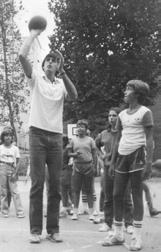
When the Italian Basketball Federation was founded in 1921, the first basketball match between home teams took place at ricreatorio De Amicis. Soon afterwards every recreation centre in Trieste set up their own court and hoops, which marked the beginning of basketball golden years: basketball tournaments between ricreatori soon included school teams and, later, sports clubs.
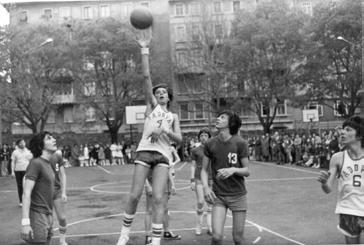
By the 1980s every self-respecting ricreatorio had at least four teams to field in tournaments: junior male team (aged 11 to 12), senior male team (aged 13 to 14), junior female team (aged 11 to 12), and senior female team (aged 13 to 14). Every line up was held in great esteem by each recreatorio director, and then General Director Mario D’Urbino was adamant when it came to tournament participation: “There have to be at least five kids able to make a basket” – otherwise, there must be something wrong with the “field teachers”.

Then crisis hit. One by one, ricreatori stopped sending their teams to tournaments (“We are focusing on other activities…”), and the Directorate
General no longer had the power (or willingness) to intervene. The only surviving teams were the Representatives, namely the ricreatori’s “national” teams that took part in the Federation’s championships, featuring the best players from no more than three to four ricreatori that were still honouring tradition. With no more teams – and no more teachers to inspire and train potential champions − the golden era of basketball in Trieste’s recreation centres came to an end.
Today ricreatori open their gates every day at 2:30 p.m. till 7:30 p.m. All the hoops are still there. Wanted: future champions.
“Quando in Italia non esistevano ancora i playground, a Trieste si giocava nei ricreatori. Uno in ogni rione.”
“Before the introduction of playgrounds at national level, basketball was played in Trieste’s ricreatori. One in each city district.”
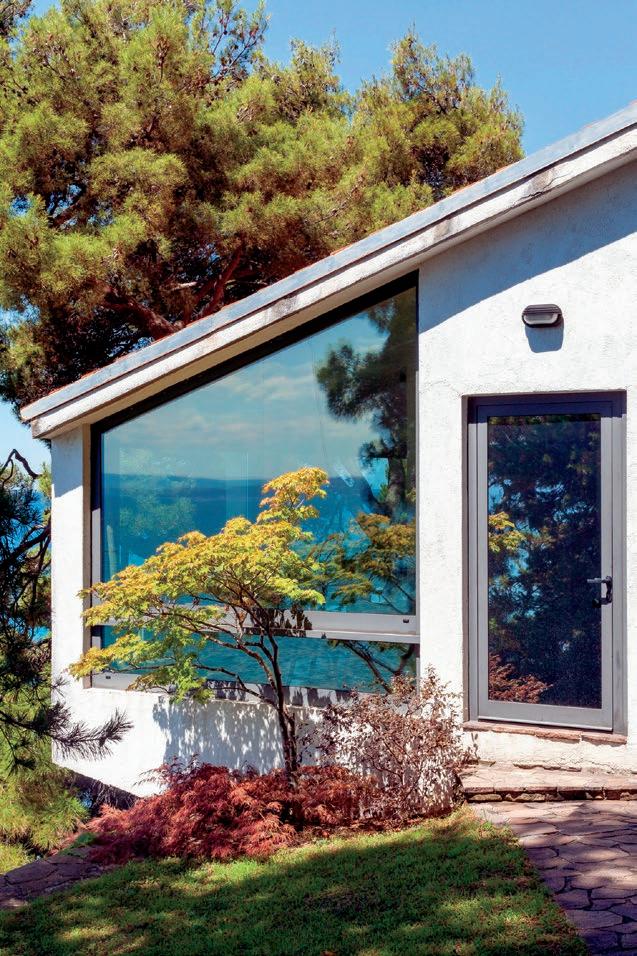



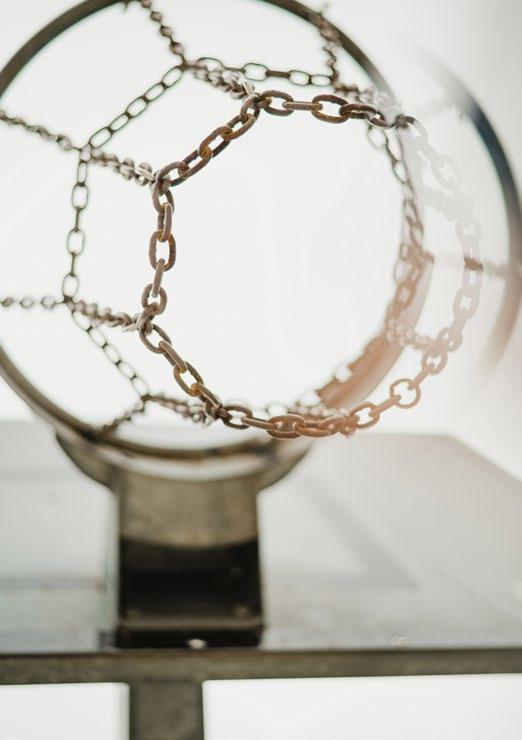 di /by Sergio Tavčar
di /by Sergio Tavčar
Quando si parla della storia del basket triestino una delle domande che mi vengono spesso poste andando in giro per l’Italia è quanta influenza ebbe su di esso la vicinanza con la Jugoslavia, paese che nel dopoguerra conobbe un boom storico nello sviluppo del basket finendo con il diventare forse la potenza numero uno mondiale, dopo gli Stati Uniti ovviamente. Tutti rimangono meravigliati quando affermo che in realtà non ne ebbe. Il nuovo assetto politico uscito dopo la fine della guerra aveva lasciato Trieste improvvisamente staccata da tutto il suo entroterra e la sua popolazione di lingua e sentimenti italiani si sentì di colpo pericolosamente accerchiata e soffocata nutrendo una diffidenza, chiamiamola così, sempre più marcata rispetto a quelli che vivevano dall’altra parte del nuovo confine. Se poi si guarda in modo più analitico, prendendo in esame solamente il lato prettamente sportivo della situazione di quei tempi, per la minoranza slovena di Trieste il basket era uno sport all’epoca totalmente sconosciuto. La minoranza cominciò a interessarsi di basket solamente una ventina di anni dopo, sull’onda intanto del regime confinario molto meno stringente rispetto all’immediato dopoguerra, che permetteva un maggior contatto con la nazione madre di oltre frontiera, ma soprattutto perché nel frattempo il basket, sia sloveno che jugoslavo, era in pieno boom di interesse e di sviluppo tecnico. In questo contesto anche la situazione politica, tanti anni dopo, si era stemperata notevolmente, per cui le cose cominciarono a cambiare in meglio.
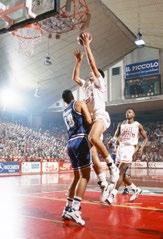
Agli inizi degli anni ’70 una squadra di basket di lingua slava, addirittura femminile, le allieve del Polet allenate dal sottoscritto, varcò finalmente la storica soglia per disputare una partita di campionato (prima la Ginnastica le partite contro le squadre slovene le giocava in campo neutro). Secondo me è proprio
quella data il vero momento di svolta nei rapporti fra la maggioranza triestina di lingua italiana e il suo retroterra slavo. In quel periodo nella minoranza stessa si sviluppò un forte movimento cestistico che dette vita a metà anni ottanta al fenomeno Jadran che coinvolse e appassionò tutta la città, che cominciò a apprezzare e in certi casi anche ad ammirare quanto stavano facendo i concittadini sloveni.
Penso che fu proprio il fenomeno Jadran il catalizzatore che sdoganò, diciamo così, il basket slavo presso la maggioranza, cosa di cui non si ebbe immediata percezione. Grande fu la mia meraviglia quando la Pallacanestro Trieste ingaggiò quale suo tecnico il montenegrino Bogdan Tanjević. Pensai che sarebbe stato accolto con molta diffidenza, e invece tutto filò liscio anche quando la squadra retrocesse in Serie B, peraltro in quegli anni forgiando il nucleo della squadra che poi sarebbe arrivata ad un solo tiro libero dalla finale dei playoff per il titolo italiano. Nessuno batté ciglio quando Boša fece il colpo del secolo scippando all’Olimpija di Lubiana lo sloveno di origini triestine, e dunque naturalizzabile quale italiano, Gregor Fučka e neppure quando poi ebbe l’ardire di schierare come straniero di campionato il 18enne serbo di Zrenjanin Dejan Bodiroga, uno che era stato scoperto da Krešo Ćosić e portato a Zara, e successivamente girato a Trieste visto che a Zara ai tempi della guerra in Jugoslavia un serbo non poteva rimanere. Poi arrivarono Ivica Marić, o in tempi recenti Zoran Dragić, tutti accolti molto bene e che hanno dato anche il loro valido contributo al basket triestino. E la bellissima amichevole fra Italia e Slovenia prima degli ultimi Europei, disputata in un’atmosfera amichevole e festosa senza alcun tipo di incidente o provocazione ci lascia sperare che, finalmente, i tempi possano essere cambiati e che il confine possa diventare semplicemente una peculiarità amministrativa.
“La Jugoslavia nel dopoguerra conobbe un boom storico nello sviluppo del basket.”
“In the aftermath of WWII basketball in Yugoslavia witnessed an astonishing evolution.”
Trieste la porta del basket
When discussing Trieste’s basketball in the rest of Italy, I am often asked how much influence the city’s proximity to Yugoslavia had on it – at a time, in the aftermath of WWII, when basketball in Yugoslavia was witnessing an astonishing evolution at international level, becoming, albeit briefly, the world’s first basketball powerhouse after the U.S., of course. And my interlocutors are usually taken aback by my answer: it had none. The post-war geo-political order had left Trieste completely isolated from the rest of Italy. As a result, the local Italian-speaking population felt dangerously hemmed in and stifled, and reacted by developing a growing feeling of mistrust –for want of a better word– towards those living on the other side of the new border.
From the specific point of view of sports, basketball was completely foreign to Trieste’s Slovene minority at the time. They started to take an interest in it only two decades later, when cross-border relations relaxed and contacts with Slovenia increased – a change that chronologically coincided with a rapid growth in basketball’s popularity and technical advancements in Slovenia and Yugoslavia as a whole. Political relations between the two countries had also improved greatly, which meant that things were finally changing for the better.
In the early 1970s the very first Slavic-speaking team −and a female
team, no less– stepped through that historic threshold to play a championship game against Trieste’s team (up to that moment Ginnastica Triestina had always met their Slovene adversaries on neutral ground): it was Polet’s female team, that yours truly was coaching at the time. I believe that day marked an important turning point in the relationship between Trieste’s Italian-speaking majority and their Slavic inland. The Slovene-speaking minority quickly embraced the ongoing basketball craze, culminating in the “Jadran phenomenon”, that worked the whole city into a frenzy in the mid-‘80s. That is when Trieste really started to appreciate and, at times, even admire their fellow Slovenian citizens’ efforts.
I am convinced that it was mostly thanks to Jadranko “Jadran” Vujačić if Slavic basketball was finally acknowledged by the majority, who had been neglecting it up to that point. Still, I was surprised to learn that Pallacanestro Trieste had signed a contract with Montenegrin coach Bogdan “Boša” Tanjević. I expected him to be met with diffidence, but that was never the case: he and the team went along splendidly, even after the team’s relegation to the B division. Coincidentally, those were the years when Tanjević was putting together the roster that would climb all the way back up to the playoffs’ final, just one free throw away from the Italian championship title. No one even blinked when Boša pulled off the deal of the century by snatching Trieste-born Slovenian (and therefore legitimately naturalised) Gregor Fučka from Ljubljana’s Olimpija; or when he dared fielding 18-year-old boy from Zrenjanin, Dejan Bodiroga, as international player for the championship formation – a young talent first noticed by Krešimir “Krešo” Ćosić, who brought him to Zadar and, later, arranged for his transfer to Trieste, because Zadar was no longer a safe place for Serbians during the war. Others followed in his footsteps: first Ivica “Ivo” Marić, and then, more recently, Zoran Dragić. Both received a very warm welcome and significantly contributed to Trieste’s basketball in return. Today, the friendly game between Italy and Slovenia on the eve of EuroBasket 2022 championship, a beautiful match played in a festive atmosphere, with no incident or provocation, is a good omen: we can finally dare hope that things have changed for good, and the border will soon become simply a mere administrative technicality.

“Penso che fu proprio il fenomeno Jadran il catalizzatore che sdoganò il basket slavo.”
“I am convinced that it was mostly thanks to Jadranko “Jadran” Vujačić if Slavic basketball was finally acknowledged by the majority.
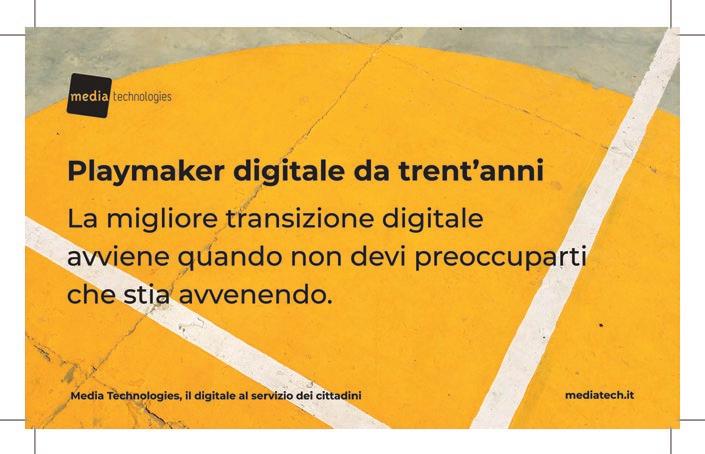
Una carriera lunga quasi cinquant’anni, durante la quale ha vinto campionati, coppe e titoli alla guida di squadre nazionali, tra le quali l’Italia, Paese che ha scelto dove vivere dopo aver conosciuto Trieste! Bogdan Tanjević, per tutti “Boscia”, non poteva mancare nello speciale con il quale IES celebra l’amore di questa città per il basket. Sulla panchina di Trieste dal 1994 al 1996, ha costruito e guidato la più forte squadra che Trieste abbia mai avuto nell’era moderna del nostro basket. Ci permettiamo di aggiungere che praticamente con “quella” squadra ha poi vinto nel 1996 quello scudetto solo sfiorato due anni prima a Trieste. Il nome sulle maglie era lo stesso, Stefanel. Ma la società non era la Pallacanestro Trieste bensì l’Olimpia Milano, dove l’imprenditore veneto aveva di fatto portato con sé armi, bagagli, coach e giocatori…!
Sono passati quasi trent’anni dal capitolo forse più doloroso nella storia sportiva di Trieste, certamente il più difficile per la nostra pallacanestro. E ancor oggi, per Boscia, mentre tormenta il secondo dei venti sigari che
accompagnano la sua giornata, il ricordo di quella primavera del 1994 resta il più grande rimpianto della sua carriera: un traguardo quasi toccato, solo sfiorato, fallito per pochi centimetri, per un tiro libero sbagliato da uno dei suoi figli prediletti, in una delle più belle ed avvincenti semifinali scudetto di sempre.
“Come posso non dico cancellare, anche solo cercar di dimenticare. Ma lo sport ti riserva accanto a gioie incredibili, anche momenti come questo. Certo, quell’eliminazione l’abbiamo tutti pagata a caro prezzo. La fuga di Stefanel da Trieste, i due anni di esilio a Milano, solo mitigati dal titolo italiano poi conquistato…”.
Dopo aver fallito un’altra finale di coppa Korač con l’Olimpia, l’anno dopo quella mancata con Trieste. Una coppa maledetta quella, per Boscia. Eppure, quasi a voler lenire l’amarezza ed il dolore di quella stagione ‘93/94, la più bella di sempre per il basket triestino, Boscia Trieste l’ha poi sposata per sempre. Qui ha cresciuto assieme alla sua inseparabile moglie i propri figli. Qui adesso si gode i nipoti. Guardando il mare e continuando a
Un grande allenatore europeo che qui è di casa
The great European coach next door
seguire con immutato amore la squadra di questa città. Dopo la panchina triestina e i due anni a Milano ci sono state le vittorie in Francia col Limoges, la panchina azzurra con un titolo europeo, l’esperienza in Turchia con squadre di club e la nazionale della mezza luna, sino all’ultima sua romantica esperienza nella terra che gli dato i natali: il Montenegro.
Ma Trieste è casa e quando le casacche biancorosse giocano la domenica sul parquet di Valmaura, nella tribunetta dietro uno dei canestri c’è un angolino a lui riservato, con gli amici di sempre ed un consiglio ed un giudizio (mai banale) regalato a chi lo avvicina.
“La squadra di adesso? Mi piace e soprattutto mi piace il suo giovane coach. Mi piace come gioca il match. Con intelligenza e coraggio. Si vede che le partite le prepara bene. Certo, la squadra gliel’ha cambiata Ruzzier, un gran bel regista. Le correzioni fatte a torneo iniziato sono state giuste. Sono sincero, ora vado nuovamente volentieri al palazzo. Vedo un basket coraggioso, dove c’è spazio anche per i giocatori di casa nostra. Sì, forse mi ricorda un po’ quella mia Stefanel, dove

c’erano soprattutto italiani e qualche triestino…”.
C’è poi una ventata d’aria nuova, con la proprietà americana. Quasi un refolo di bora…
“Se arrivano investimenti importanti, si può certamente costruire qualcosa di molto interessante. Spero partendo da qualche prospetto giovane. Quando dico costruire, questo intendo: lavorare sui giovani, farli crescere in casa. Non solo pescare giocatori in giro per il mondo. Leggo poi di traguardi ambiziosi, come l’Eurolega. Percorso lungo e difficile. Servono tanti soldi ed un’arena importante per una Lega seconda solo alla NBA. Ma pensare in grande non è sbagliato, se sai come arrivare al traguardo finale”.
“Dal 1994 al 1996, ha costruito e guidato la più forte squadra che Trieste abbia mai avuto nell’era moderna.”
“Between 1994 and 1996 he put together and led the strongest team modern Trieste has ever had.”
Acareer spanning almost fifty years, during which he won championships, cups, and accolades, at the helm of national formations, including Italy, where he chose to live after visiting Trieste. Bogdan Tanjević, Boša for short, simply had to be featured in this special issue of IES celebrating Trieste’s love for basketball.
From his place in the bleachers, between 1994 and 1996, he put together and led the strongest basketball team modern Trieste has ever had. Almost the very same team that, in 1996, won the championship title – a title Pallacanestro Trieste had very nearly won two years earlier. The players’ jerseys featured the same sponsor: Stefanel. But the winning team was no longer Pallacanestro Trieste: it was Olimpia Milano, which the sponsor had chosen over the city of Trieste, bringing coach and players with him, lock, stock, and barrel!

Thirty years have gone by since that dark and most painful chapter in Trieste’s sports history, quite possibly the hardest time for Trieste’s basketball. Boša, a cigar between his fingers, the second in his daily twenty-cigar ration, thinks back to the spring of 1994 and the greatest regret of his entire career: a victory within reach, a dream he came so close to he could almost touch it, if it had not been for a few centimetres, a missed free throw, a failed attempt by one of his favourite boys, in one of the most exciting semi-finals of all times.
“How could I ever erase such a memory. Yet, I suppose it comes with the territory: sport can give you the greatest joys, but also profound pain. We all suffered the consequences of that elimination: Stefanel’s desertion, two years of exile in Milan, the bittersweet taste of the championship victory…”
And then, once again, another FIBA Korać Cup final debacle, this time against Olimpia Milano, one year after losing with Trieste. Boša’s bane. Yet, perhaps as a way of exorcising the pain and bitterness of the 1993-1994 season – incidentally, the best season for Trieste’s basketball, Boša committed the rest of his life to Trieste. He raised his children here, together with his wife
and loyal partner, and the two of them now can enjoy their grandchildren, the view on the sea, and, of course, Trieste’s basketball team. After Trieste and the two years in Milan, Boša’s time finally came: first a successful run in France with Limoges CSP; then Italy’s second European title at FIBA Eurobasket 1999. Boša spent the following decades in Turkey, coaching both clubs and national teams, until 2015, when he moved back to his home country, Montenegro, and devoted the last two years of his coaching career in the bleachers of the Montenegro national team.
Boša’s home, however, is and always will be the city of Trieste. On Sundays, when the city’s team hits the parquet of Allianz Dome in Valmaura, he invariably takes his (own) seat in one of the galleries behind the backboard, surrounded by his lifelong friends, never too busy to share his insight with those who approach him.
“The current team? I like it, but most of all I like their young coach. He plays a smart and brave game – I can tell he studies hard before every match. Of course, Ruzzier also played a pivotal role in turning the tables on the game: he is a true playmaker, his vision transformed the team and the adjustments he made at the beginning of the tournament were just what the doctor ordered. I admit that I am finally enjoying watching them play. I appreciate this new boldness, which is giving a chance to our home talents. Yes, it does remind me a little of my Stefanel team, made mainly of Italian players, and a few Triestini.”
The current sponsor, San Franciscobased Cotogna Sports Group, came as a wind of change. Almost like a gust of Bora …
“New investments may create interesting opportunities for growth. Personally, I hope young talents will be the ones benefitting from all this. What I mean by growth is the willingness to focus on young potential and groom the future home team, rather than shopping for players abroad. I also read that the new Board has some ambitious goals, which include the EuroLeague. That is no small feat: it will require a lot of time, hard work, money, and a suitable arena – after all, EuroLeague is the top-tier league in Europe, second only to NBA. Still, thinking big is not a mistake, when one has a long-term plan and is ready to carry it through.”
“Vedo un basket coraggioso, dove c’è spazio anche per i giocatori di casa nostra.”
“I appreciate this new boldness, which is giving a chance to our home talents.”

La pallacanestro è una gentile e abile corteggiatrice, perché per invaghire al più presto il prossimo cestista compie il primo passo riducendo al minimo ogni forma di ostacolo: diminuisce le dimensioni della palla, abbassa il canestro e semplifica le regole del gioco. Riuscire poi a trasformare quest’infatuazione in innamoramento non è affatto scontato, ma esistono situazioni, o luoghi, in cui questo passaggio avviene con immediatezza. È questo il caso di Trieste, dove il legame tra il basket e la città non ha i tratti di un amore destinato prima o poi a finire, ma di un innamoramento perpetuo e inossidabile, in cui entrambe le parti hanno bisogno, per loro natura intrinseca, l’una dell’altra.
L’aria che si respira nelle palestre triestine, in cui da tre quarti di secolo istruttori e allenatori di ogni generazione fungono da cupidi tra questo sport e i cestisti e le cestiste di domani, sembra essere composta da molecole che facilitano lo scoccare della scintilla tra la palla a spicchi e il giovane atleta. Lo dimostrano, guardando solo agli ultimi cinquanta anni, i vari Tonut Sr., De Pol, Attruia, Pozzecco, Pecile, Cavaliero, Ruzzier e Tonut jr. che, dopo aver iniziato a giocare da giovanissimi nei campi alabardati, sono diventati atleti di rilievo nazionale e internazionale; lo testimoniano i tornei, come il Don Marzari e il MuggiaEstate per il minibasket, il Memorial Tramontin e la No Borders
Euro Cup per il basket giovanile, che hanno reso Trieste un polo di riferimento per la pallacanestro giovanile non solo italiana e, infine, continuano a dimostrarlo le migliaia di ragazzi e ragazze che ogni anno popolano le palestre di tutta la città cercando di fare un canestro in più dell’avversario.

L’operato che le società giovanili cestistiche triestine continuano a svolgere è fondamentale per alimentare il rapporto simbiotico tra la città e la palla a spicchi perché, per quanto questo sia figlio di un magnetismo naturale, per evolversi nel modo più autentico possibile e continuare ad essere un tratto distintivo della piazza necessita di una programmazione puntuale e di un supporto continuo e adeguato allo sviluppo del giovane appassionato.
Dall’altopiano alle rive, dal mare di Barcola a quello di Muggia, passando per la roccia carsica e l’acqua adriatica, una palla rotola, si sporca, galleggia, decolla e rimbalza fino ad adagiarsi su un parquet di legno all’ombra di una retina, in attesa di essere raccolta e lanciata verso un anello ferrato. Un viaggio tortuoso nello spazio del territorio giuliano e nel tempo delle generazioni di triestini, un’odissea che però ha un lieto fine perché Trieste è come un ragazzaccio aspro e vorace, con gli occhi azzurri e mani troppo grandi per regalare un fiore, ma mai troppo piccole per raccogliere una palla spicchiata e lanciarla verso l’alto.
Basketball is a gentle, yet persistent suitor, able to woo its prey from the moment it sets its eyes on them – it even takes the first step, removing any possible obstacle standing in the way of future hoopers: beginners are allowed a smaller basketball, a lower hoop, and simpler rules. Yet, infatuation does not always turn into love: only the right place and circumstances can make the miracle happen. It is the case of Trieste, where basketball is not, nor was ever synonymous with summer fling or passing fancy: basketball and the city are bound by pure, undying love, a communion of souls that cannot live without each other. The very air one breathes in Trieste’s gym halls seems to hold the perfect elements to spark the romance between young athletes and the b-ball, under the watchful eye of teachers and coaches, who have been playing the role of Cupid for almost a century. Suffice it to mention the great names of the last fifty years: Tonut Sr., De Pol, Attruia, Pozzecco, Pecile, Cavaliero, Ruzzier, Tonut Jr. –top game makers, who approached the game in their childhood in Trieste’s recreational centres and gym halls, and soon made a name for themselves as all-star basketball players at national and international level. Trieste has been a long-standing reference point for youth basketball, both in Italy and abroad – witness biddy-basketball tournaments “Don Marzari” and “MuggiaEstate”, as well as youthleague tournaments “Memorial Tramontin” and “No Borders Euro Cup”. Every year, thousands of boys and girls fill the basketball courts of Trieste, following the call of the hoop.
Trieste’s biddy basketball clubs play a fundamental role in nurturing the symbiotic relationship between basketball and the city: indeed, despite the almost magnetic pull of this sport, young basketball enthusiasts need consistency, long-term support, and structure to steer their passion end evolve into full-fledged athletes.

An orange ball rolls, from the Karst Plateau down to the seafront, along the coast that stretches from Barcola to Muggia, bouncing on Karst rocks, floating on Adriatic waves, eventually landing, wet and besmirched, on the hardwood floor of a basketball court, under the shadow of a net, waiting for someone to pick it up and dunk it through the ring. A winding road, a long journey through time and space, across a region and countless generations. This is a story with a happy ending, because Trieste is “like some mean, delinquent kid with blue eyes and hands too big to give anyone a flower” (from Umberto Saba’s Trieste, translation by Christopher Mills, N/T), but not too small to hold a basketball and throw it in the air.
Plateau
“Dall’altopiano alle rive, dal mare di Barcola a quello di Muggia, una palla rotola, si sporca, galleggia.”
“An orange ball rolls, from the Karst
down to the seafront, along the coast that stretches from Barcola to Muggia.”
Carismatico ed esuberante, il coach triestino della nazionale italiana di basket
Charismatic and exuberant, the coach of the Italian national basketball team
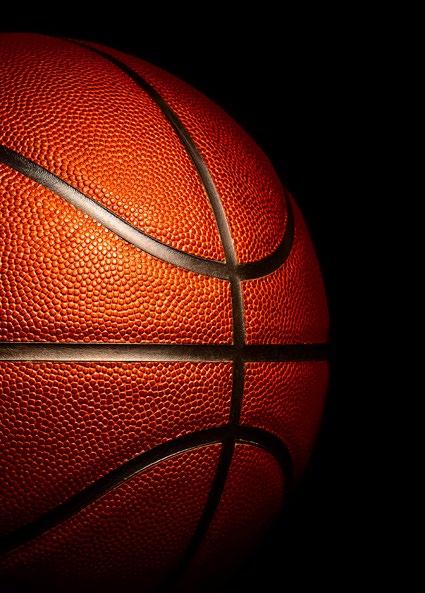
Nella storia della pallacanestro italiana, anche quella della Nazionale, c’è sempre uno o più triestini di mezzo. In questo caso il soggetto è nettamente più riconoscibile degli altri, per carisma ed esuberanza: Gianmarco Pozzecco, classe 1972. Nonostante dissimulasse la sua natura più recondita asserendo correttamente di essere un nativo di Gorizia, il soggetto racchiude tutta l’essenza triestina, la “cità dei mati” schiaffeggiata dalla Bora, quella che genera tipi interessanti, in un caleidoscopio cromatico di sfaccettature caratteriali, con un talento naturale per il basket in senso allargato. Il “Poz” a fianco del Presidente federale Gianni Petrucci è come Keith Richard in udienza dal Papa, i due più antitetici personaggi della pallacanestro italiana a braccetto per ridare credibilità al movimento azzurro. Il talento può essere declinato in tanti modi, da quello più impattante come il suo modo di interpretare la pallacanestro da giocatore sui 28 metri di parquet, a quello più subliminale da allenatore, nel contaminarsi di esperienze e poi riprodurre una sua idea di gioco. Un giocatore gettato nella mischia, con la “camicia” di forza di una giacca e una cravatta e soprattutto tante e troppe regole da seguire, un esempio da dare quale timoniere a Capo d’Orlando dall’amico Beppe Sindoni. Un percorso tortuoso, fatto di grandi slanci

emotivi, del troppo amore finito male (vedi Varese e Bologna sponda Fortitudo), ma anche di grande umiltà, facendo un passo indietro e guardando da dietro le quinte come assistente al Cedevita e a Milano. La parentesi sassarese quella più convincente e affine al suo credo, l’apoteosi è la chiamata in azzurro nel post Sacchetti, con la qualificazione ai Mondiali e l’esperienza unica nelle Filippine, Giappone e Indonesia. Gianmarco Pozzecco come allenatore non ha bisogno di lavagnette o di edulcorati virtuosismi dialettici per farsi capire, potrebbe consumare un time-out con improperi o silenzi facendo capire esattamente ai suoi giocatori cosa volesse. L’empatia poi non la compri al mercato, l’anima immortale dell’uomo in canotta e pantaloncini irradia coerenza per convincere anche il più scettico degli interlocutori a seguire la sua lucida follia. Uno come lui, animato da un infinito segno di riconoscenza, non può non avere quel giusto bilanciamento fra l’umiltà di dover imparare ancora tanto e la personalità per credere fermamente nel progetto in atto. Del resto, a proposito di riconoscenza, Tullio Micol non avrebbe mai permesso al suo pupillo “rompipalle” di essere passivo a fronte di una passione; e chi agisce con il cuore, di solito, ha vinto in partenza. E il Poz vince sempre e unicamente alla sua maniera.
“Coach
“Non ha bisogno di lavagnette o di edulcorati virtuosismi dialettici per farsi capire.”
Gianmarco Pozzecco has no use for chalkboards or highsounding speeches to convey his vision.”
There has always been a Triestino or two marking the history of Italian basketball, and Gianmarco Pozzecco is certainly one of them. True: he was born in 1972 in Gorizia, at the foot of the Julian Alps. And yet, Gianmarco “Poz” Pozzecco’s flamboyant and charismatic nature truly symbolises the essence of Trieste “cità dei mati” (Triestine dialect for “city of the mad” N/T) – a land swept by the Bora, hothouse of inspired and extravagant fellows, and palette of colourful and multi-faceted souls with a keen sense for basketball. Seeing the Poz side by side with former president of Italian Basketball Federation Gianni Petrucci is an unusual sight, almost like witnessing Keith Richards at an audience with the Pope. The two are, indeed, diametrically opposed. Only their shared desire to provide new momentum to Italian basketball could bring them together. Talent comes in countless shapes and forms: it materializes in the style of a hooper, swiftly moving on the court; but it can also find its expression in the vision of a coach, as he turns his game experience into strategy. Poz the game maker, Poz the coach. A player thrown into the coaching fray and forced to wear the shackles of suit and tie, writhing in an endless sea of rules, and carrying the weight of leadership, for instance when he was at the helm of friend Peppe Sindoni’s Orlandina
Basket. A winding road of emotional outbursts and a great love gone bad (first in Pallacanestro Varese and then in Fortitudo Bologna); but also the ability to take a step back for the greater good, working behind the scenes as assistant, first for Cedevita and later for Olimpia Milano. And then, finally, the breakthrough: after a brief, yet rewarding season on the bleachers of Dinamo Sassari, in 2022 Pozzecco replaced Meo Sacchetti as head coach of the senior men’s Italy national team, which immediately qualified for 2023 FIBA World Cup. And, later, the Philippines, Japan, Indonesia,…. Coach Gianmarco Pozzecco has no use for chalkboards or high-sounding speeches to convey his vision: he could spend the entire duration of a time out in silence, or, conversely, fill it with insults and vulgarities, and his players would still know exactly what he wants them to do. After all, empathy is not a commodity one can purchase at a store counter. What truly distinguishes Pozzecco is his game maker’s soul, so unfiltered and consistent that it could convince even the most sceptical of his interlocutors to follow him in his lucid folly. He wears his gratitude like a uniform, a perfectly balanced ensemble of humility and determination. He knows he has still a lot to learn, but he won’t let this awareness come between him and his unwavering belief in his plan. Apropos gratitude, Pozzecco’s mentor and coach Tullio Micol would have never allowed his “pain-in-the-arse” protégé to be passive, instead of living his passion. You can never truly lose, when you follow your heart. And the Poz knows only one way to win: his own.
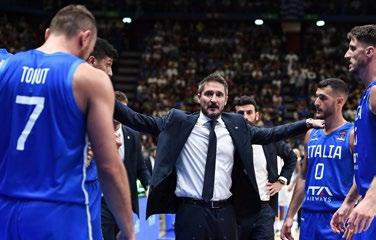
“L’umiltà di dover imparare ancora tanto e la personalità per credere nel progetto.”
“A perfectly balanced ensemble of humility and determination.”
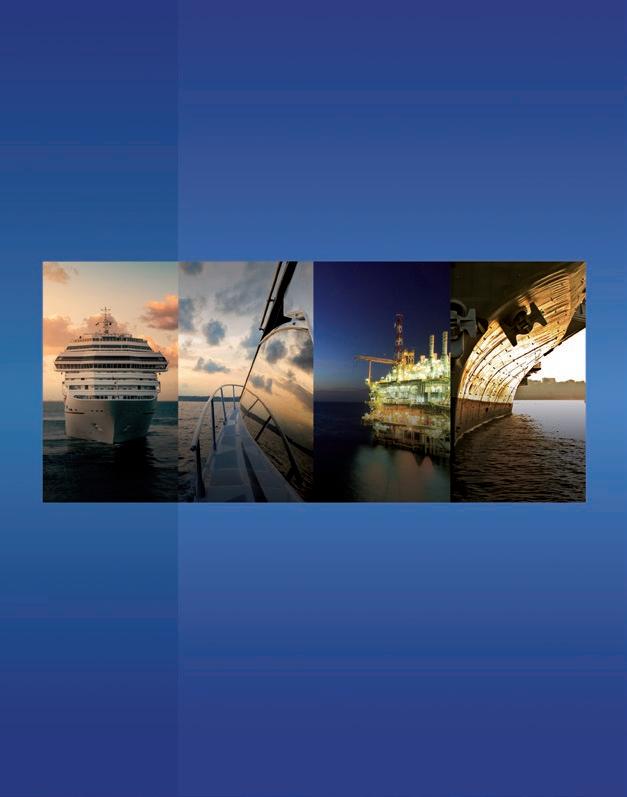

È stato una delle colonne della Stefanel di Tanjević, straordinario atleta di 204 centimetri; condensato di potenza, tecnica e velocità. E visione di gioco, dote che poi gli è servita per una seconda splendida carriera: dietro un microfono come commentatore al fianco dei telecronisti della RAI e delle piattaforme tv che seguono il basket. Capacità di sintesi, competenza e mai una parola fuori posto: fuoriclasse anche via satellite!
Former pillar of Tanjević’s Stefanel, this 6.7ft athlete was a powerhouse of strength, skill, and speed. His exceptional play-making ability marked the passage into the second phase of his brilliant career, as he took his place behind the microphone, joining the team of RAI basketball commentators and cooperating with other sports platforms. His play-by-plays are known for their synthesis, expertise, and relevance: De Pol is a real star player of satellite communication.

Papà Alberto a 17 anni in serie A con il nero verde dell’Hurlingham, prima di girare mezza Italia: Livorno, Cantù, ancora Trieste e poi Gorizia. Campione d’Europa, nel 1983 a Nantes e medaglia d’oro dieci anni dopo ai Giochi del Mediterraneo. Il figlio Stefano, dopo il biancorosso in Pallacanestro Trieste, sette anni a Venezia con due scudetti ed il titolo di MVP del campionato, prima di passare all’Olimpia di Milano, unico triestino a giocare nell’Eurolega del basket moderno. Inamovibile pedina nello scacchiere azzurro del ct Pozzecco. E speriamo che la dinastia dei Tonut non si fermi qui… –
Dad Alberto was only 17 when he played in the Italian A League wearing Hurlingham’s black-and-green jersey, before joining other teams throughout the entire country: Livorno, Cantù, Trieste again, and then Gorizia. He played with Italy’s national team when it won the FIBA EuroBasket 1983 in Nantes, and, ten years later, he won his second gold at the 1993 Mediterranean Games. Son Stefano started out wearing the red and white of Pallacanestro Trieste, before spending the following seven years playing for Venice’s Reyer Venezia, with which he won two championships and the title of LBA Most Valuable Player. In 2022 he signed with Olimpia Milano and is currently the only Trieste-born EuroLeague player. He is also a regular key player in coach Pozzecco’s national formation. Here is hoping that the Tonut dynasty has an even brighter future ahead…

Perché non c’è stato solo Air Jordan a vestire i colori di Trieste. Dopo il nero-arancio dello sponsor Stefanel, un’altra star dell’NBA Scottie Pippen, vestì addirittura il biancorosso di Trieste. Accadde nel settembre del 1991 per un’amichevole di lusso a Verona, contro l’allora Glaxo.
Scottie Pippen con Trieste, Charles Barkley con Verona e David Robinson tra il pubblico. Pippen con Fucka, Cantarello, Middleton e Gray, Barkley sul fronte opposto: 41 punti per quest’ultimo, 40 per Pippen, Quel punto di differenza decise la sfida, vinta da Verona 117 a 116.
Air Jordan has not been the only visiting star player wearing the colours of Stefanel Trieste. In September 1991


NBA All Star and hall-offamer Scottie Pippen put on the red-and-white jersey of the city’s team to play a highprofile exhibition game in Verona against then Glaxosponsored Scaligera Basket Verona. Scottie Pippen on Trieste’s team, Charles Barkley on Verona’s team, and David Robinson in the audience. Playing alongside Pippen were Fucka, Cantarello, Middleton, and Gray. Pippen scored 40 points, Barkley 41. And so, Verona won by one single point, 117 to 116.
Super Dino scelse Trieste per festeggiare i suoi 40 anni, sul parquet di Chiarbola. Quello che resta “il giocatore italiano di pallacanestro”, monumento del nostro basket, dal 2003 nella Naismith Hall of Fame, ha vestito per due stagioni il biancorosso Stefanel, giocando proprio con questa maglia una storica sfida contro suo figlio Andrea, prima di chiudere giustamente la carriera nella “sua” Milano.
“Super Dino” chose the parquet of Trieste’s Chiarbola arena to celebrate his 40th birthday. The legend of legends, “Italy’s best basketball player ever”, and Naismith Hall of Fame player since 2003, Dino Meneghin wore the redand-white jersey of Stefanel Trieste for two seasons, during which he even played an Italian League game against his son Andrea, before spending the last year of his professional career in the roster of “his” Olimpia Milano.
Una vita a bordo parquet in quel di Trieste, da tempo la sua casa. Dopo Chiarbola, il Dome di Valmaura, per migliaia di scatti che sono adesso una mostra sotto la volta del palasport intitolato a Cesare Rubini. In pratica, una carrellata iniziata a metà degli anni 90, che porta la firma di quello che oggi è considerato “il fotografo del basket triestino”.
A life spent on the court side of the arenas of his hometown, Trieste, namely Palasport Chiarbola and, more recently, Valmaura’s Allianz Dome. Thousands of shots, from the mid-‘90s onwards, that are now displayed under the dome of the indoor arena named after basketball champion Cesare Rubini. Images that chronicle the history of Trieste’s basketball, signed by Trieste’s basketball photographer.

Da giocatore fenomenale a presidente dell’Euroleague. Dejan Bodiroga è probabilmente il più forte giocatore non italiano ad avere vestito la maglia di Trieste. Nel 1992 scappava dalla Jugoslavia in fiamme. Lasciava Zara per giocare due stagioni a Trieste, prima di vincere uno scudetto nella Trieste travestita Olimpia Milano e deliziare in seguito platee importanti come quelle di Madrid, Atene e Barcellona, prima di chiudere ancora da protagonista in Italia, nell’ultima squadra romana che aveva ancora qualcosa di importante da dire dopo Larry Wright! –
A great basketball player turned President of EuroLeague Basketball. Dejan Bodiroga possibly Trieste’s best foreign player ever. It was 1992 and Dejan had just left Zadar due to the impending war. He travelled to Italy to keep doing what he did best: shooting hoops – and much more. After two seasons with Stefanel Trieste, he won a championship with his team members under the disguise name Olimpia Milano, and then set off to conquer the entire continent: Madrid, Athens, Barcelona, on a round trip that would eventually lead him back to Italy, to join Rome’s last team that still had some game left after Larry Wright!
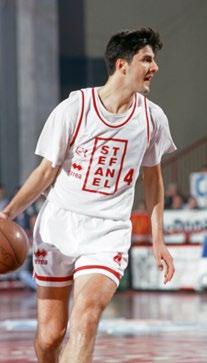

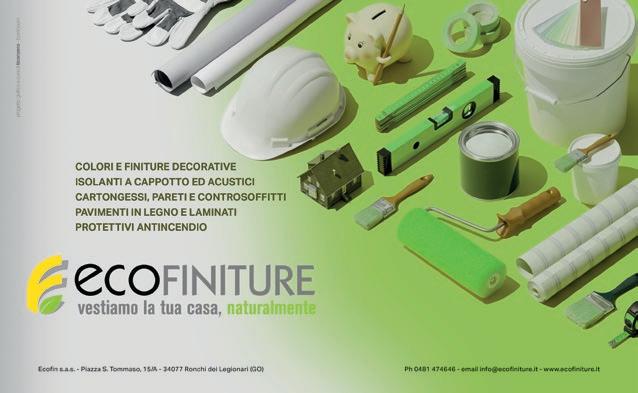
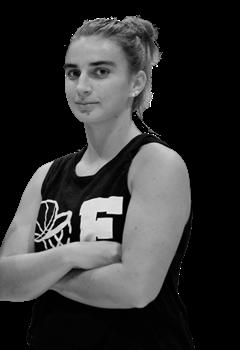
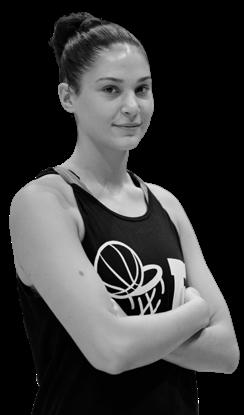

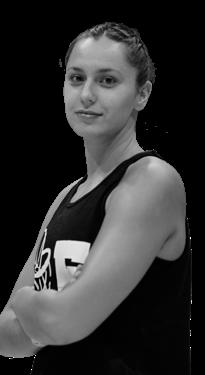


Parlare di basket a Trieste è come parlare della bora, di qualcosa che permea ogni cosa, che pervade la vita di ogni famiglia, che scandisce i tempi della quotidianità.
Sarà per l’esordio prematuro di questo sport in città negli anni 20, sarà per il contesto unico ed eccezionale dei ricreatori, con tanti palloni che rotolano veloci, lanciati da decine di mani disordinate su campetti di cemento.
Di tiri, a dire il vero, ne entrano pochi… e pare strano perché in quei campetti, tra gomitate e tabellate a squadre miste, hanno giocato quasi un centinaio di atleti e atlete, azzurri e azzurre d’Italia.
Non si può parlare di basket femminile a Trieste senza partire da quelle spianate di cemento, arene di cruenti tornei sbuccia-ginocchia, dove tutte le giocatrici di Trieste sono nate.
Tanti motivi rendono Trieste così speciale per il basket femminile: quel cemento, quelle gomitate, le innumerevoli piccole società, orgoglio dei rioni negli anni ‘80 e ‘90. È questa anima da campetto di strada che ha reso possibili tanti piccoli miracoli; quest’anima ha permesso a una Under 15 di un campetto di periferia, che si allenava 2 volte alla settimana sotto un tendone di plastica, di vincere due titoli italiani consecutivi; questa stessa anima ha fatto nascere fenomeni di vero “ardore cestistico”, come l’Interclub Muggia, che fa più titoli italiani giovanili che abitanti all’anagrafe.
Saranno i 6 campionati italiani
assoluti, con l’indelebile ricordo dei titoli del 1930 e 1931 che hanno battezzato la nascita della Federazione Italiana Palla al Cesto nel 1930, saranno i 15 scudetti giovanili vinti, numero enorme per una città di queste dimensioni, saranno i 3000 del palasport di Chiarbola, sarà la leggenda Tanya Pollard, il fenomeno più incredibile che abbia mai calcato i parquet femminili in Italia, sarà che oggi una società nata ieri conquista in un amen la serie A2 e diventa uno dei vivai più importanti d’Italia, ma c’è qualcosa che incute sempre enorme rispetto quando, in giro per l’Italia, si parla della pallacanestro femminile triestina.
Eppure Trieste non è mai stata una piazza ricca, mai stata una piazza professionistica come Venezia, Bologna, Schio, Como, Milano, Vicenza e tante altre. Qui non ci sono mai stati assegni milionari, foresterie, pullman personalizzati per andare in palestra; qui anche in serie A1, anche negli scudetti degli albori, anche nelle semifinali davanti a migliaia di tifosi, tutto è stato costruito su ragazze triestine, sulle ragazze dei ricreatori. Questo è il fenomeno prezioso e unico in Italia del basket femminile di Trieste. Chi cercava professionismo, chi cercava remunerazioni importanti è dovuta emigrare, per cercarli legittimamente altrove.
Qui nell’incredibile storia del nostro basket femminile ci sono sempre stati solo tre motori, i più potenti: il talento, la passione e l’amore per questa città. Perché Trieste è così.
Basketball in Trieste is like Bora: it is omnipresent, permeating family life and chanting away the hours of daily routine. It has been like this for over a century now, since the 1920s, when basketball made its debut in the city’s arena, and then quickly conquered the courts of Trieste’s ricreatori: dozens of fast-rolling orange balls escaping the clumsy hands of young players and bouncing on the concrete fields.
Very few shots actually made the ring in those days… yet, those very courtyards have witnessed the first rough games and jabs of mixed formations of players that eventually made the roster of Italy’s national men and women’s basketball teams.
Trieste’s women’s basketball started right here, on these concrete fields of knee-grazing tournaments. In the ‘80s and ‘90s even the smallest club had at least one female team that was the pride and joy of its Rione (i.e., city district). This street-game spirit was the catalyst for many little miracles, like a backstreet under-15 player, who could only practice twice a week under a canopy cover, winning two consecutive Italian championship titles; or a tiny sports society like Interclub Muggia, located in the town of Muggia, whose youth basketball national titles are more numerous than the town’s population.
Six absolute Italian championships, including the memorable victories of 1930 and 1931, which coincided with the birth of Federazione Italiana Palla al Cesto (FIBA-affiliated Italian Basketball
“C’è qualcosa che incute sempre enorme rispetto quando, in giro per l’Italia, si parla della pallacanestro femminile triestina.”
“Trieste’s women’s basketball commands respect wherever it is mentioned throughout the whole country.”
Federation, N/T); 15 youth championship titles, won by Italy’s smallest province; 3,000 basketball fans filling the PalaChiarbola arena (which could only hold slightly less than 2,000); basketball legend and hall-of-famer Lataunya “Tanya” Pollard Romanazzi, possibly the most exceptional women’s basketball talent ever to play on Italian soil; a new-born club making the A2 League in the blink of an eye and immediately becoming one of Italy’s most important basketball hothouses; … it could be because of one or all of these reasons that Trieste’s women’s basketball commands respect wherever it is mentioned throughout the whole country.
Quite the achievement, considering that Trieste has never been a major player in the business of professional basketball like Venice, Bologna, Schio, Como, Milan, or Vicenza – just to name a few: no seven-figure checks, no club lodgings, no private buses for teams’ transfers. Every milestone, big or small, from the A1-League debut, to the first championship titles, to the semi finals in front of thousands of viewers –everything was built on the talent of the young women of Trieste’s ricreatori, which is why Trieste’s women’s basketball is so unique and valuable.
Top-tier professional games and salaries are to be sought elsewhere.
The amazing story of local women’s basketball rests on three mighty pillars: talent, passion, and the love for this city. Because this is how Trieste is.
A Trieste nel 2009 è nata Futurosa Basket, più di una squadra, un progetto basato su un concetto fondamentale, l’inclusione, un’idea spinta da un’ambizione naturale: incrementare e sviluppare il movimento cestistico femminile in una “città di basket” come Trieste. Questa filosofia è già stata ripagata dai successi: dalla promozione in Serie A2 con una squadra giovanissima, alla partecipazione alle Finali Nazionali, senza dimenticare le tante convocazioni delle atlete triestine in rappresentative regionali e nazionali, e perfino le medaglie d’oro conquistate in campionati e tornei internazionali. Questo sistema dopo oltre 10 anni sta dando i suoi frutti. Tante atlete giocano ai livelli più diversi, altre sono diventate istruttrici o allenatrici. Sono tutte risorse per Futurosa e per il futuro del basket made in Trieste.

In 2009 Trieste celebrated the launch of Futurosa Basket: much more than a team, Futurosa is a project based on the principle of inclusion and aimed at promoting and enhancing women’s basketball in Trieste, also known as the city of basket. A mindset that is yielding significant pay-offs: first the A2-League debut with one of the youngest teams in history; then the participation in the National finals, and the wave of draft picks among Trieste’s young female athletes, both for regional and national rosters; and, finally, the number of gold medals won at international championships and tournaments. Over ten years have gone by, and Futurosa’s system still runs like clockwork. Early team members are now playing professionally at various levels, others have become basketball instructors and coaches. All are precious resources for Futurosa and the future of Trieste’s basketball.
“Questa anima da campetto di strada ha reso possibili tanti piccoli miracoli.”
“This street-game spirit was the catalyst for many little miracles.”
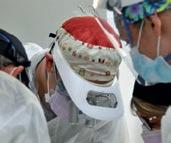


La Fondazione Monticolo&Foti è una fondazione d’impresa che nasce con l’obiettivo di potenziare le attività di responsabilità sociale del gruppo Monticolo&Foti. Obiettivo principale: agire nell’ambito dell’inclusione. La Fondazione si impegna nel dare rilievo a questo valore nel mondo delle disabilità, ma, per esteso, anche per tutti coloro che sperimentano qualsiasi forma di esclusione, sia essa in ambito sociale, culturale, scolastico o lavorativo. Nata nel maggio 2022, in meno di un anno ha già incluso più di 300 utenti nelle proprie attività, con progetti trasversali per lo sviluppo dell’autonomia lavorativa per persone con disabilità, progetti rivolti agli sport inclusivi e in generale in attività sociali.
Cantieri sostenibili è il primo progetto della Fondazione, nato per creare percorsi di autonomia lavorativa per ragazzi con disabilità cognitiva. Patrocinato dal Mipaaf per il 2022 e dal Masaf per il 2023, prevede la donazione di piante e alberi che vengono messi a dimora da ragazzi con disabilità intellettive assieme ai bambini delle scuole primarie del territorio. Un capitolo importante è quello che racconta le attività collegate allo sport, che per la Fondazione è uno strumento fondamentale nello sviluppo dell’inclusione.
In questo contesto ci sono già state diverse collaborazioni: per il BaskIN, cioè il basket integrato che permette agli atleti con disabilità e normodotati di giocare insieme; per gli sport acquatici, grazie al progetto La magia dell’Acqua sono state promosse attività natatorie per bambini e ragazzi con disabilità fisica e intellettivo-relazionale.
L’impegno della Fondazione Monticolo & Foti
— Sports are for everyone
The goal of Fondazione Monticolo & Foti
Fondazione Monticolo&Foti is an Enterprise Foundation, whose aim is to enhance social responsibility activities by Monticolo&Foti Group.
Main goal: work for inclusion. The Foundation promotes inclusion first and foremost with regard to disabilities, and, from a broader perspective, it is actively committed to prevent any form of exclusion in social, cultural, educational, and job setting.
In less than a year, since its launch in 2022, Fondazione Monticolo&Foti has involved more than 300 users in its activities, through cross-sectional projects to assist people with disabilities in finding and maintaining employment, as well as projects based on inclusion in sports and society at large.
Cantieri sostenibili (lit. sustainable work sites), Fondazione’s first project, provides training opportunities for young people with cognitive disabilities. Thanks to the sponsorship of the Italian Ministry of Agricultural, Food, and Forestry Policies (named MiPAAF in 2022 and MASAF in 2023), Fondazione donates saplings and trees that young people with intellectual disabilities then bed out together with children of local primary schools.
Sports are one of Fondazione’s key instruments to promote inclusion.
The following are just two of the many cooperation projects endorsed by the Foundation: BaskIN promotes integrated basketball, where able-bodied ballers play together with athletes with disabilities; La magia dell’Acqua (lit. The magic of water) focuses on water sports, with swimming activities tailored to the needs of children and young adults with physical and cognitive-relational disabilities.
Per approfondire tutte le attività svolte dalla Fondazione
/To learn more about Fondazione’s activities
www.fondazionemonticolofoti.it
“Nata nel maggio 2022 ha già incluso più di 300 utenti nelle proprie attività.”
“Since its launch in 2022, Fondazione Monticolo & Foti has involved more than 300 users in its activities.”
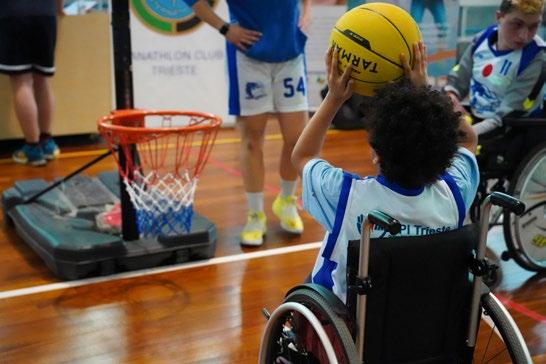

“Tegnì i fileti paraleli” gridava tra le raffiche di borino papà Dario Benussi a Furio e Gabriele, futuri campioni sui campi di regata di tutto il mondo, insegnando i rudimenti della vela nell’arena senza confini che, ogni seconda domenica d’ottobre, ospita la Barcolana.
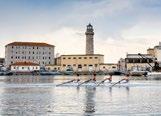

“Svèia tuti che devo dirve una roba ” urlò al telefono Gianmarco Pozzecco a papà Franco alle 3 di notte per la prima chiamata in nazionale: il giovane playmaker, ora commissario tecnico, che si allenava centrando con palline di carta accartocciata il fustino di Dixan. L’erede di quel modo di fare guascone del barbuto pivot nostrano che segnò il basket triestino degli anni ‘70.
“Te devi sgobar come tuti” il verbo da sotto i baffi del professor Giuseppe Lo Duca al figlio Marco. Il marchio triestino della dinastia nella pallamano che, nel tempio di Chiarbola, ha vinto 17 scudetti. Chissà se il volto del “Prof” si sarebbe rigato di lacrime per l’esordio del nipote Pietro.
Parlava poco ma diceva tutto con lo sguardo, invece, papà Cesare –il capitano delle due Coppe Campioni del Milan di Nereo Rocco– che, con il “riguardo” tipico dei triestini di un’epoca in cui la modestia era virtù, festeggiò con la gioia della riservatezza i primi passi della carriera del figlio Paolo Maldini (poi capace di metterne in bacheca 5 di coppe dalle grandi orecchie).
Inseguiva i fratelli più grandi mimando pose di fioretto Margherita Granbassi, l’olimpionica nella scherma e vincitrice della Coppa del Mondo, diventata un celebre volto televisivo dopo aver catalizzato l’attenzione degli
 di /by Marco Stabile
di /by Marco Stabile
La tradizione di famiglia
è la ragione principale di questo primato Family tradition turns into a national record
italiani nelle notti magiche vissute in pedana.
Di storie come queste Trieste ne ha scritte a decine. È la tradizione di famiglia il principale “perché” della città più sportiva d’Italia: propensione certificata nero su bianco nel 2017 dalle statistiche de “Il Sole 24 Ore”. Ma più che i dati su impianti, praticanti e presenza nelle élite di vertice, ciò che ne caratterizza davvero la sportività è lo spirito. Ed è il dialetto triestino che veicola il senso di queste carriere fatte di schiettezza, sacrifici ma anche di quella capacità di sdrammatizzare lo sforzo e non prendersi troppo sul serio neppure da campioni conclamati. Padri, madri, fratelli e sorelle che –respirando le influenze di una città multietnica, plurilinguistica e multiculturale– hanno aperto strade nello sport in un ventaglio di discipline incredibile se si pensa a una realtà di 200mila abitanti.
La “legacy” sportiva, però, non è solo patrimonio di chi diventa un big.

Se ci si sveglia all’alba in estate e ci si affaccia al golfo, ecco le corsie immaginarie percorse a suon di voga dai canottieri, in parallelo i podisti sciolgono i muscoli sulla riviera pensando alla prossima mezza maratona, a metà strada ci sono gli specialisti del nuoto pinnato, a pelo d’acqua, in direzione di Miramare. In autunno, con la bora, basta affacciarsi dal Castello San Giusto per osservare bolidi in formato windsurf sfidare il vento e le onde. Nel pomeriggio, se le raffiche si addolciscono, altrettante vele colorate prendono quota da San Servolo, l’unica stazione al mondo dove gli amanti del parapendio decollano in uno Stato e atterrano in un altro. Dalla Slovenia all’Italia guardando le pareti che hanno fatto da palestra al padre dell’arrampicata sportiva, Emilio Comici, nella cui roccia carsica si aprono oltre 2mila cavità: quelle grotte “di casa” che fanno della speleologia, altrove nicchia per eletti, una disciplina diffusissima fra i triestini. Lo sport, insomma, è parte dell’anima di Trieste.
Una città in divisa tricolore all’Allianz Dome che canta all’unisono l’inno di Mameli prima di ogni partita della Pallacanestro Trieste. Una città che si ritrova in piazza dell’Unità, in abiti ottocenteschi, a ballare il valzer sfidando il Guinness dei Primati per numero di partecipanti. Ma sotto l’uniforme o le balze del vestito niente mocassini né tacchi a spillo ma un paio di sneakers. Trieste è sempre pronta per la prossima corsa.
Tegnì i fileti paraleli” (Triestine dialect for “Keep those tell-tails straight”) barked through the wind gusts the voice of Dario Benussi, father to Furio and Gabriele, future world champions of regatta races, as he was showing them the ropes in the Gulf of Trieste – where the Barcolana regatta takes place every year, on the second Sunday of October.
“Svèia tuti che devo dirve una roba” (Triestine dialect for “Wake everybody up, I need to tell you something”) shouted Gianmarco Pozzecco’s voice at 3:00 a.m. from the telephone receiver his father Franco was holding: the young playmaker, who used to throw crumpled paper balls into empty washing-up liquid bottles, had just been selected by the Italian national basketball team – the true heir of fellow Triestino and swashbuckling, bearded centre Giulio Iellini, who marked Trieste’s basketball in the ‘70s.
“Te devi sgobar come tuti” (Triestine dialect for “You’ve got to work hard like everyone else”) used to repeat “il Prof” (the professor) Giuseppe Lo Duca to his son Marco. The Triestine dynasty of handball, with their 17 championship victories in Chiarbola temple of handball. One cannot help but picture a tear
“Più che i dati su praticanti e presenza nelle élite di vertice, ciò che caratterizza davvero la sportività di Trieste è lo spirito.”
“It is less about clubs, infrastructure, or victories, and more about the spirit of sportsmanship.”
or two glistening in the eyes of “il Prof” at his nephew Pietro’s debut.
Football manager and player Cesare Maldini, on the other hand, was a father of few words, but meaningful gaze: he captained coach Nereo Rocco’s AC Milan to win two UEFA Champions League titles, yet his celebrations never crossed the line of modesty− at a time when modesty was still considered a virtue; he displayed the same composure even when his son, Paolo “the Captain” Maldini, made him proud as he followed in his steps (and later went on to win five UEFA Champions League titles).
Margherita Granbassi’s models were her older brothers: she started out mimicking their fencing poses, which led to her gold medal at the foil 2006 World Fencing Championships and her bronze medal at the 2008 Beijing Olympics. After catalysing the public’s attention on foil fencing, she became a famous face of Italian television.
These are just a few of many Trieste stories of families in sports. Indeed, family tradition is the reason why Trieste owns the title of Italy’s city of sports, as verified by a 2017 study published in Italian financial newspaper of record Il Sole 24 Ore. It is less about clubs, infrastructure, or victories, and more about the spirit of sportsmanship –aptly conveyed by the Triestine dialect, able to take the edge off of otherwise dramatic experiences and sacrifices that led to spectacular careers. The key is not to take oneself too seriously, not even when one is the best of the best. Fathers, mothers, brothers, sisters, born and bred in a multi-ethnic, multilingual, and multicultural city, paved the way to the top of a plethora of sports
disciplines (especially considering that Trieste had a population of slightly less than 200,000 at the time). Their legacy belongs to more than just future champions. In summer, looking out onto the Gulf at dawn, one can spot the routes traced by rowers, which seem to run parallel to the joggers’ seafront itineraries, after they are done stretching their muscles, picturing future marathons; and, in between, the fin swimmers, gliding on the water surface towards Miramare. In autumn, when the Bora wind blows, the view from the ramparts of San Giusto Castle embraces the intricate dance of countless sails that dart on the water surface, braving the waves and wind gusts. In the afternoon, as the wind softens, a second surge of colourful sails lifts off from San Servolo – the only paragliding station where one takes off in one country (Slovenia) and lands in a different one (Italy), with a view on the mountain sides that served as a training site for the father of rock climbing Emilio Comici. Underneath this sheet of karstic rock there lies a network of more than 2,000 caves: a speleological paradise for experts and amateurs alike.
In other words, sport is an integral part of Trieste’s soul.
A city that dons the three-colour flag and fills Allianz Dome indoor sporting arena with Mameli’s national anthem of Italy before every game of Pallacanestro Trieste. A city that pours into Piazza dell’Unità d’Italia, waltzing in period costumes to challenge the Guinness World Record. Interestingly, both basketball uniforms and skirt frills are best worn with sneakers: in Trieste, one never knows when one will feel like running.
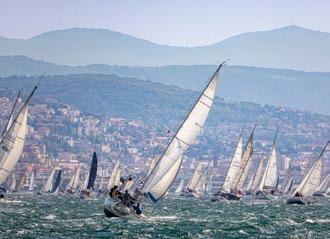
“Carriere fatte di schiettezza, sacrifici ma anche di quella capacità di sdrammatizzare lo sforzo e non prendersi troppo sul serio.”
“Dramatic experiences and sacrifices that led to spectacular careers. The key is never to take oneself too seriously.”
dal latino progredior, “procedere”, “andare avanti”
In ogni impresa della vita - nel lavoro, nello studio, nel tempo libero, nelle grandi cose ma anche nelle piccole - ogni attività è un’occasione per migliorarsi.
Un circolo virtuoso che si crea quando si affronta ogni impegno con generosità ed entusiasmo (le qualità più belle dei giovani).
Per andare avanti ogni giorno. Concedendo legittimo spazio ai momenti di distrazione e riposo, ma per riprendere subito con rinnovata lena.
Perché non si fermi mai il flusso di quel misterioso divenire che è il progresso.
Da sempre la Fondazione sostiene le iniziative che coinvolgono i più giovani: dallo studio allo sport, al tempo libero.

